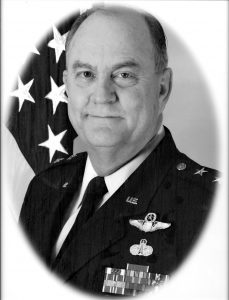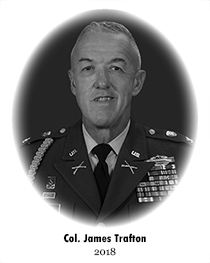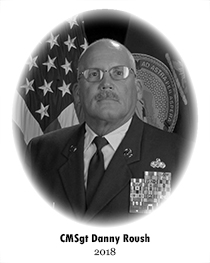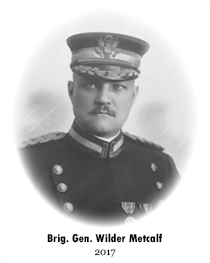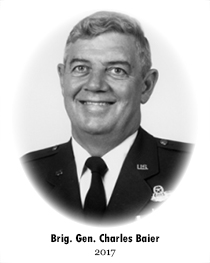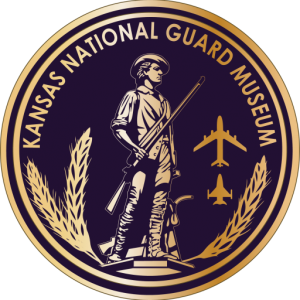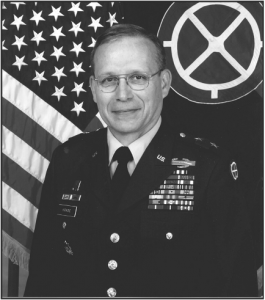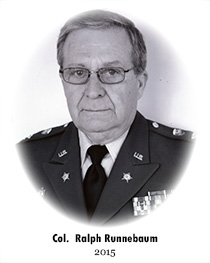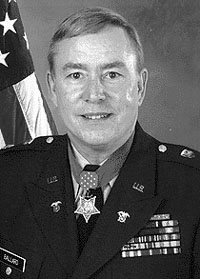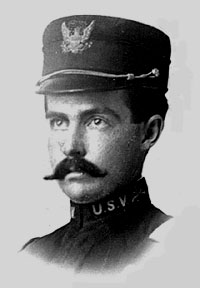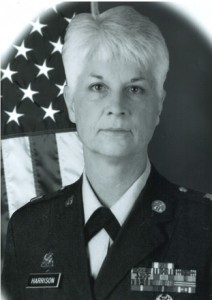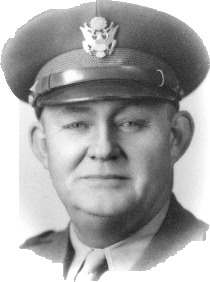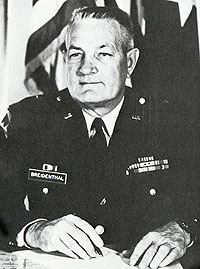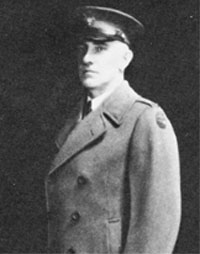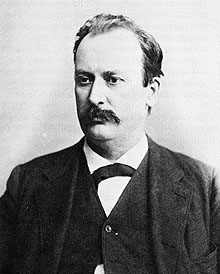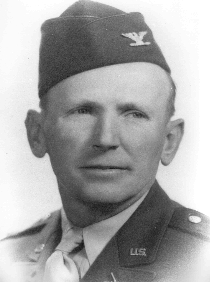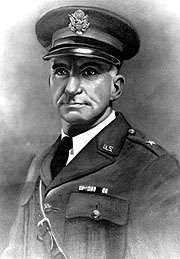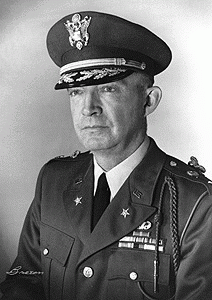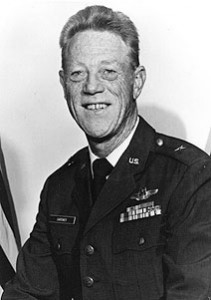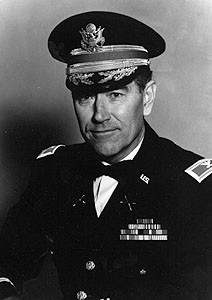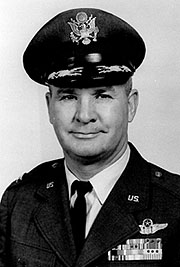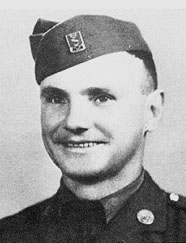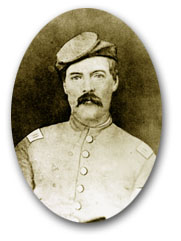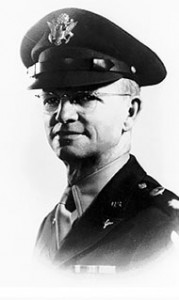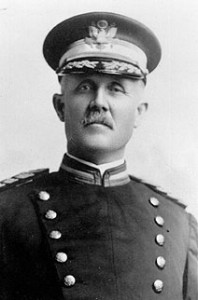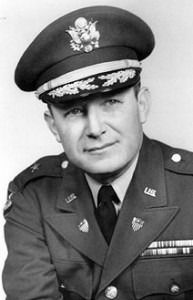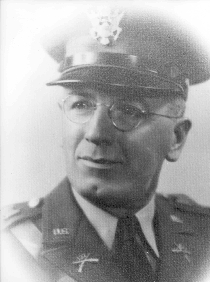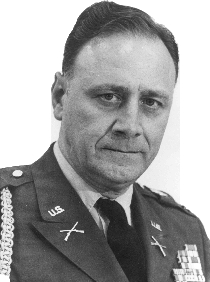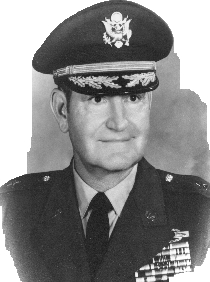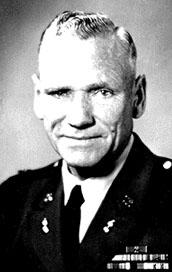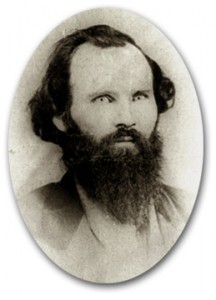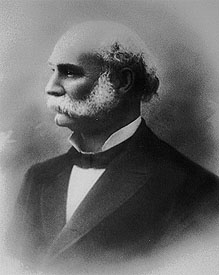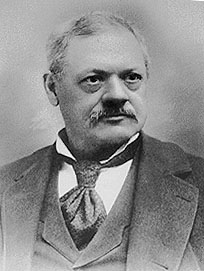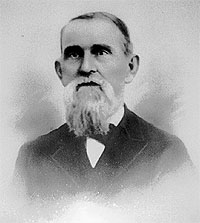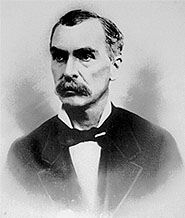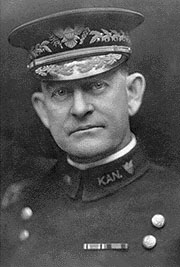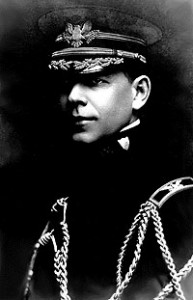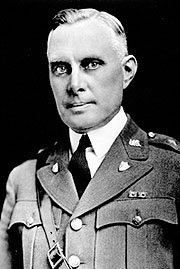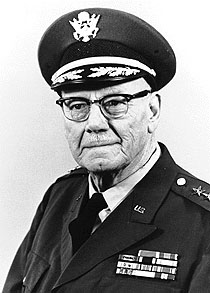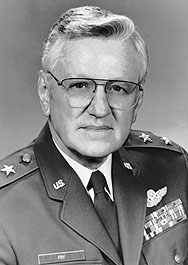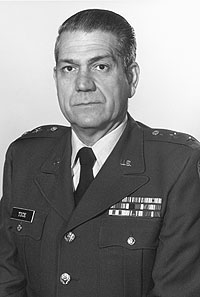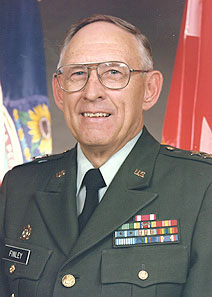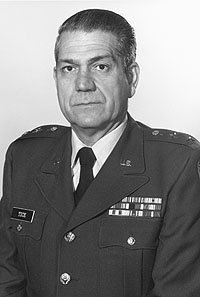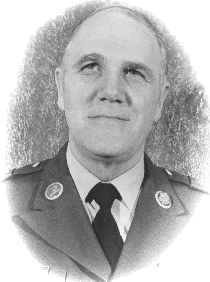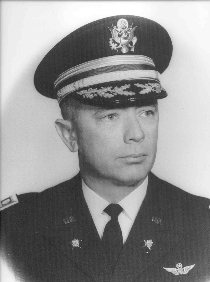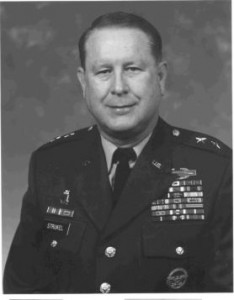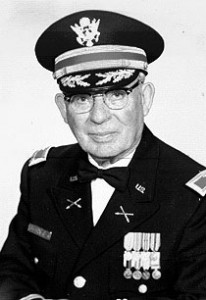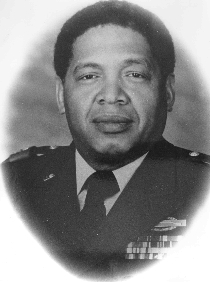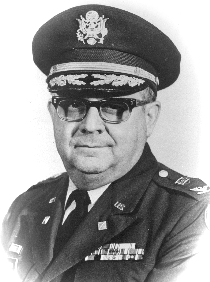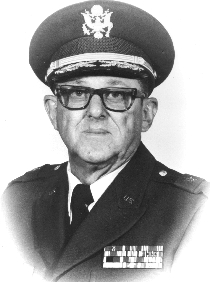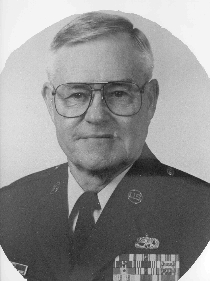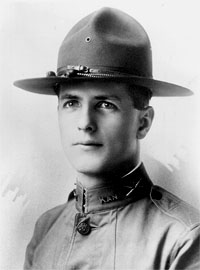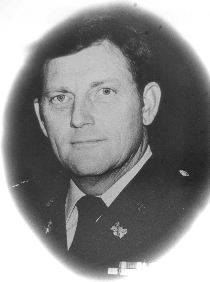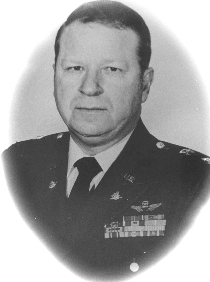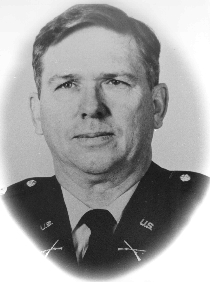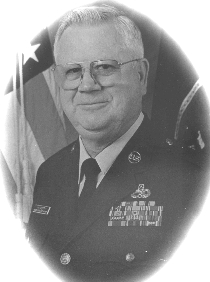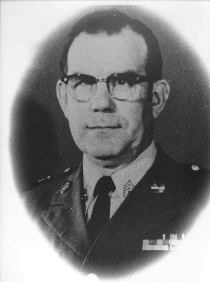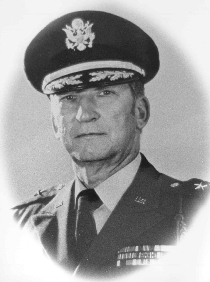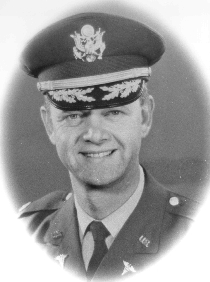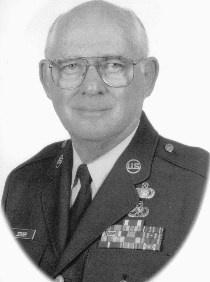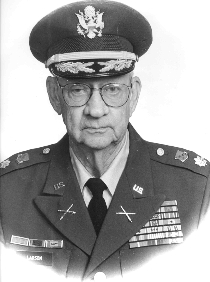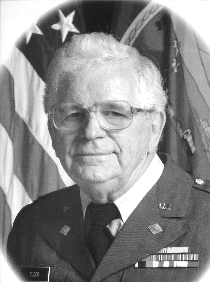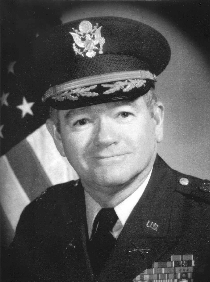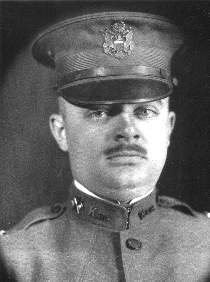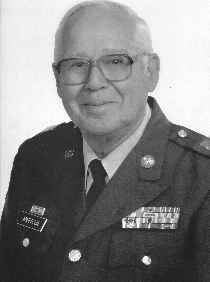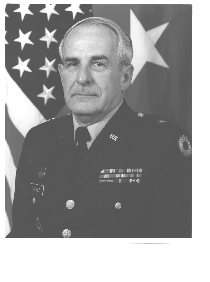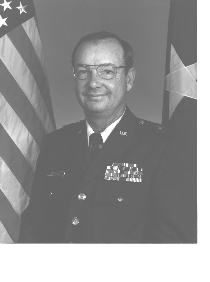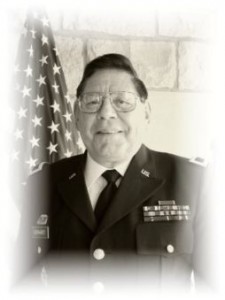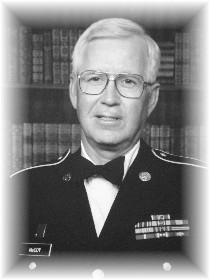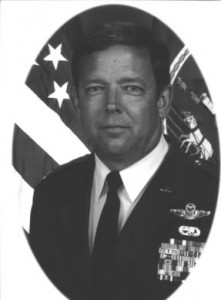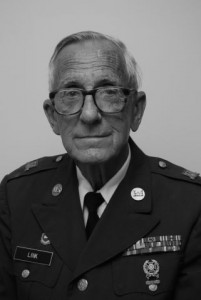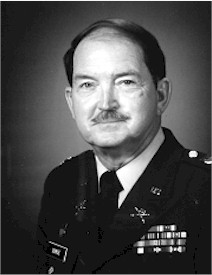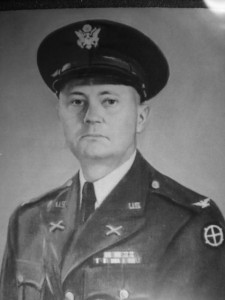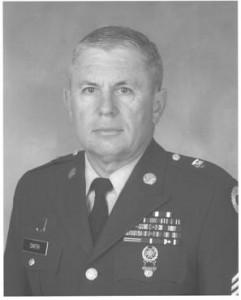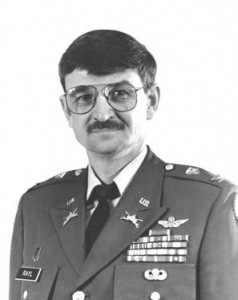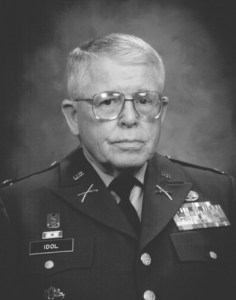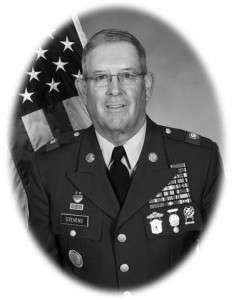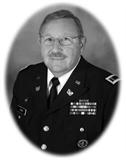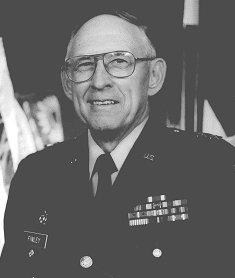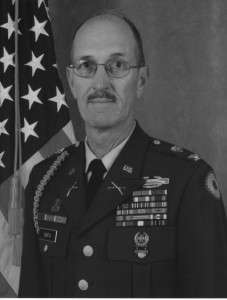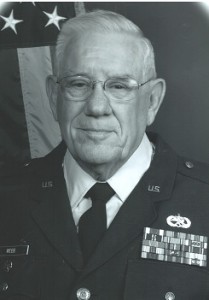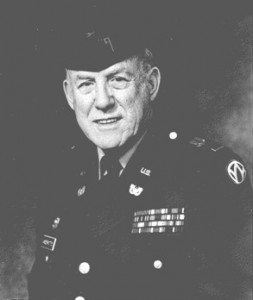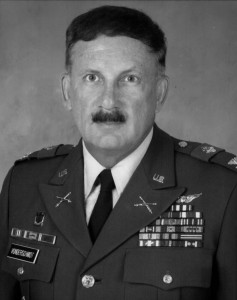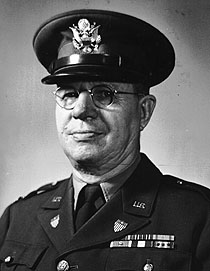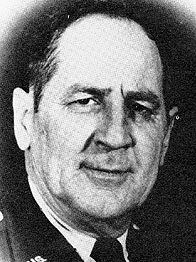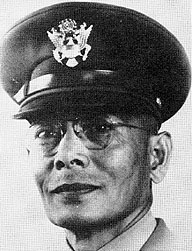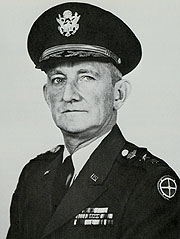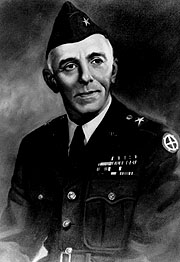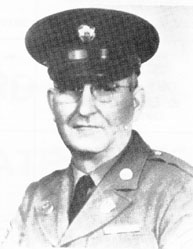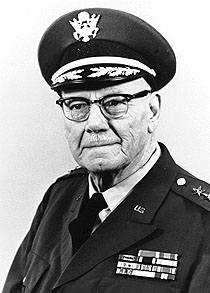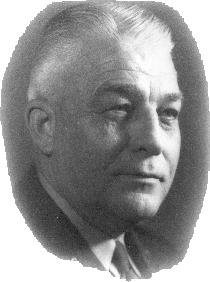In the month of October, 1861, A. C. Davis, of Wyandotte county, Kansas obtained authority from Major General Fremont, then commanding the Western Department, to raise a regiment of Cavalry in the State of Kansas, and reported to the Governor for instructions. The regiment thus authorized was designated the Twelfth Kansas Volunteers, and the rendezvous was established at Fort Leavenworth, Kansas.
The organization was commenced on the 8th day of November by the muster-in of First Lieutenant C. L. Gorton, of Leavenworth county, Adjutant; First Lieutenant Julius G. Fisk, Wyandotte county, Quartermaster, and Dr. J. B. Welborne, of Wyandotte county, Surgeon.
A company was organized on the 22d of November, with Captain Samuel A. Williams, of Bourbon county; First Lieutenant Robert. H. Hunt, of Davis county; Second Lieutenant Harvey A. Smith, of Linn county.
B company was organized on the 9th of December, with Captain Henry Hopkins; First Lieutenant, John F. Aduddell, and Second Lieutenant Oscar F. Dunlap, all of Leavenworth county.
C company was organized on the 11th of December, with Captain Daniel S. Whittenhall, of Doniphan county; First Lieutenant Charles Harrison, and Second Lieutenant William M. Hook, both of Leavenworth county.
D company was organized on the 11th of December, with Captain Amaziah Moore and First Lieutenant Robert White, of Atchison County, and Second Lieutenant Horace L. Moore, of Douglas county.
E company was organized on the 15th of December, with Captain John Gardner, of Leavenworth county; First Lieutenant Elias S. Stover, of Davis county, and Second Lieutenant Augustus T. Lovelette, of Leavenworth county.
On the 26th of December, to the five squadrons as above organized, the Governor attached four companies of Nugent’s Regiment of Missouri Home Guards, as follows: F. company, Capt. A. Thomas; G company, Captain C. Lovejoy; H company, Captain B. F. Simpson, and I company, Captain C. Hill. (These four companies were organized in the fall of 1861, in the counties of Douglas, Johnson, and Miami, under command of Lieutenant Colonel William Mewhinney, of Douglas county, and attached themselves temporarily to Nugent’s regiment. They were raised for home service, and were consequently disbanded on the 4th of February, 1862), and the organization then consisting of nine companies, was designated by order of the Governor the Ninth Kansas Volunteers.
On the 31st of December, Surgeon J. B. Welborne’s muster-in was revoked for reason of inability to procure a certificate of qualification from the State Board of Medical Examiners, and on the same day Dr. Joseph P. Root, of Wyandotte county, was mustered in as Surgeon. The regiment was inspected and mustered for pay by Colonel Graham, Eighth Kansas Volunteers, who was temporarily in command of all the regiments then organizing and in rendezvous at Fort Leavenworth.
On the 4th of January, 1862, the following officers were mustered in: Lieutenant Colonel Owen A. Bassett, of Douglas county; Major Julius G. Fisk and First Lieutenant Luther H. Wood, of Wyandotte county, Quartermaster, vice Fisk.
On the 7th of January, the following officers were mustered in: Major Thomas B. Eldridge and Rev. Charles Reynolds, Chaplain, both of Douglas county.
K company was organized on the 7th of January with Captain Austin W. Mathews, of Leavenworth county; First Lieutenant Pat Cosgrove and Second Lieutenant Gideon M. Waugh, both of Johnson county.
The organization of the Ninth Kansas Volunteers, with ten companies, was completed on the 9th of January by the muster in of Colonel Alson C. Davis and Dr. George B. Wood, Assistant Surgeon, both of Wyandotte county.
In obedience to orders from Department Head Quarters, the Ninth moved from Fort Leavenworth on the 20th of January to Quindaro, in Wyandotte county, for the purpose of finding quarters suitable for protection from the inclement weather.
On the 4th of February, companies F, G, H and I were, by order of Major General Halleck, commanding Department of Mississippi, mustered out of the service, for the reason that their organization was irregular; and on the same day, by order of Colonel A. C. Davis, K company was designated F company.
First Lieutenant Charles Harrison, of C company , deserted to the enemy February 8th. (He captured horses out of Missouri, near Quindaro, and took them to Leavenworth, Kansas, and sold them, for which he was arrested and lodged in jail. He broke away, knocking the guard down, and made good his escape. He went to Missouri and joined the bushwhackers.) On the 20th of the same month, First Lieutenant Edward C. D. Lines, of Wabaunsee county was mustered in vice Harrison.
The regiment was reduced to six companies, the resignation of Colonel Alson C. Davis was accepted and Major Thomas B. Eldridge was mustered out, at his own request, as a supernumerary.
Pursuant to instructions from the Head Quarters of the army, Major General Hunter, commanding Department of Kansas, with consent of His Excellency Charles Robinson, Governor, issued an order on the 28th of February, assigning to the Ninth Kansas Volunteers the following companies, formerly belonging to the Second Kansas Volunteer Infantry:
G company was organized on the 27th of December, 1861, with Captain Hugh Cameron, of Douglas county; First Lieutenant James C. French, of Shawnee county, and Second Lieutenant Albert Schroder, of Leavenworth county.
H company was partly organized with First Lieutenant John Johnson, of Anderson county.
I company was partly organized with First Lieutenant David E. Ballard, of Marshall
county.
And the following companies, formerly belonging to the Eighth Kansas Volunteers:
K company, Captain George F. Earl.
L company, Captain Asaph Allen.
And the following company, formerly belonging to the Third Kansas Volunteers:
M company, Captain John E. Stewart.
(The last three squadrons were transferred to another regiment on the 27th of March, and therefore are not more particularly mentioned here.)
The organization was again completed by the assignment of the following officers from the Second Kansas Infantry: Colonel Robert B. Mitchell, of Linn county; Major Charles W. Blair, of Burbon county, and Major William F. Cloud, of Lyon county. First Lieutenant John Pratt, of Douglas county, was mustered in as Adjutant, vice Gorton. First Lieutenant Cyrus L. Gorton Quartermaster, vice Wood. First Lieutenant Luther H Wood, First Battalion Quartermaster, and First Lieutenant David C. Coleman, of Miami county, First Battalion Adjutant.
On the 28th of February, the regiment was inspected and mustered for pay by Lieutenant Colonel Bassett.
The organization of I company was completed on the 8th of March by the muster-in of Captain Arthur Gunther and Second Lieutenant John K. Rankin, both of Douglas county.
On the 11th of March the regiment was paid by Major Eaton to include the 28th of February, and on the same day Colonel Mitchell arrived at Quindaro with companies G, H and I with six hundred horses, and assumed command of the regiment.
Pursuant to instructions from Department Head Quarters, the Ninth moved from Quindaro March 12th to Shawneetown.
On the 15th of March the number of the regiment was changed, by order of the Governor, from the Ninth Kansas Volunteers to the Second Kansas Volunteers. This change was made at the insistence of Colonel Mitchell, who had commanded a three months’ regiment–The “Second Kansas Volunteers” (infantry)–in the campaign in the summer of 1861, in Southwest Missouri, under General Lyon, which regiment had been mustered out and authorized to be re-organized for three years service. The three squadrons thus organized–G, H and I–were assigned to the Ninth, by order of Major General Hunter, on the 28th of February.
This change in the number of the regiment has led many to believe that it was the same which Colonel Mitchell commanded at the battle of Wilson’s Creek, August 10th, 1861, and it often occurred that the celebrated engagement of Wilson’s Creek was referred to as part of its history; but only a portion of the regiment has any claim whatever to a participation in the stirring scenes of July and August, 1861.
On the 16th of March, arms, consisting of Hall’s carbines, Austrian carbines and French revolvers, were issued to the men, and company M, Captain John E. Stewart, reported and was assigned its place in line.
On the 18th of March, Second Lieutenant John A. Lee, of Shawnee county, was mustered into G company, vice Albert Schroder resigned March 7th; and on the 22d of March, Second Lieutenant Charles Dimon, of Burbon county was mustered into A company, vice Harvey A. Smith, resigned February 28th.
On the 24th of March, a portion of the regiment, consisting of nine officers and two hundred and forty-one men, went in pursuit of a band of guerrillas in the neighborhood of Little Santa Fe, Missouri, attacked and dispersed them, and returned on the 25th. In this skirmish Major Pomeroy, temporarily on duty with this regiment, was wounded.
On the 25th of March the following officers were mustered in and assigned to duty: Second Lieutenant Joseph Cracklin, of Douglas county, Second Battalion Adjutant; Second Lieutenant Joseph Cracklin, of Douglas county; Second Battalion Adjutant; Second Lieutenant John B. Dexter, of Wyandotte county, Second battalion Quartermaster; Second Lieutenant William B. Parsons from Sergeant C company, third Battalion Adjutant, and Second Lieutenant Elizur T. Goodrich, of Leavenworth county, Third Battalion Quartermaster.
On the 27th of March the regimental designation was again changed, by order of the Governor, to the “Second Kansas Cavalry”; companies K, L and M were transferred to a new regiment–the Ninth Kansas Cavalry, Colonel Edward Lynde–Major W. F. Cloud was commissioned and entered on duty as Colonel of the Tenth Kansas Volunteers, (an infantry regiment formed by the consolidation of the Third and Fourth regiments Kansas Volunteers), and a squad of men organizing under First Lieutenant Avra P. Russell, of Leavenworth county, for the Second Kansas Volunteers, Infantry, was attached to this regiment and designated K company.
On the 28th of March, Captain Byron P Ayres, from private of K company, was mustered into A company, vice Williams resigned.
The organization of K company was completed April 5th, by the muster-in of Captain Avra P. Russell, First Lieutenant Barrett B. Mitchell, from private same company, and Second Lieutenant John M. Mentzer, from sergeant same company.
The organization of H company was completed on the 8th of April, by the assignment to duty of Samuel J. Crawford, of Anderson county, who was retained in the service at the time of the muster-out of the three month’s organization, known as the Second Kansas Volunteers, for the purpose of assisting in its re-organization for three years’ service.
On the 9th of April, Colonel Robert B. Mitchell received information that he had been appointed Brigadier General of Volunteers.
On the 12th of April Colonel Mitchell changed the letters of several squadrons as follows:
Captain Crawford’s company H will be known as company A.
Captain Hopkins’ company B will be known as company B.
Captain Whittenhall’s company C will be known as Company C.
Captain Moore’s company D will be known as company D.
Captain Gardner’s company E will be known as company E.
Captain Cameron’s company G will be known as company F.
Captain Matthew’s company F will be known as company G.
Captain Gunther’s company I will be known as company H.
Captain Ayre’s company A will be known as company I.
Captain Russell’s company K will be known as company K.
and assigned his reasons therefor that “Samuel J. Crawford was the ranking Captain, and accordingly his company should be company A, and rank should in like manner determine the letters of the other squadrons”. This reasoning of Colonel Mitchell was not correct. The companies were lettered according to the date of their organization or assignment, and once lettered they should not have been changed. Officers took rank in the volunteer service from date of muster-in, and the letters of their respective squadrons had nothing to do with the determination of that question. Of the ten companies mentioned in the order, Captain Ayres’ company was the first organized, and should have retained the letter A as its designation. The same rule would apply with equal force to the change of the letter of Captain Matthew’s company from K to F, by order of Colonel Davis, in February previous.
Colonel Robert B. Mitchell having been promoted to Brigadier General of Volunteers April 8th, relinquished command of the Second on the 16th, and orders were issued directing the regiment to join the New Mexico expedition, concentrating at Fort Riley, and on the same day, Second Lieutenant Samuel K. Cross from private same company, was mustered into A company.
On the 20th of April the regiment moved from Shawneetown en route for Fort Riley, and reached Lawrence on the 22d, where orders were received from District Headquarters directing a detail of one hundred and fifty non-commissioned officers and privates to report forthwith at Fort Leavenworth for assignment to duty with a battery of six 10 pdr. Parrott guns, (called Hollister’s battery) for the New Mexico service. These men having been detached for permanent duty, sent from the regiment, and having a separate military history, will be more particularly mentioned hereafter in a supplement.
On the 26th of April the Second started for and reached Topeka the next day, where it halted for muster, and on the 30th it was inspected, mustered for pay, and reviewed by Lieutenant Colonel Bassett.
On the 1st of May, the following officers were detached and ordered on duty at Brigade Headquarters: First Lieutenant John Pratt, Adjutant, to be A.A.A.G.; First Lieutenant Cyrus L. Gorton, Quartermaster, to be A.C.S., and First Lieutenant Edward C. D. Lines to be A.D.C.; and the following officers were ordered on duty in the Regimental Staff: First Lieutenant David C. Coleman, First Battalion Adjutant, to be Acting Adjutant; Second Lieutenant John B. Dexter, Second Battalion Quartermaster, to be Acting Quartermaster; and on the same day the Second started for Fort Riley, and reached there on the 4th, and reported to Brigadier General Mitchell, commanding new Mexico Brigade.
The regiment was inspected May 8th, by Major Walling, Seventh U. S. Infantry, and on the 9th was paid by Major Eaton, to include the 30th of April, 1962.
The men were armed with sabres May 12th, and on the 13th the regiment was reviewed in line with the Brigade by Brigadier General Mitchell.
On the 15th of May, Surgeon Joseph P. Root, claiming to have been regularly commissioned by the Governor as Colonel, and being recognized as such at Brigade Headquarters, assumed command, and on the same day, Second Lieutenant Bradford S. Bassett was mustered in and assigned to duty in B company, vice Dunlap, resigned May 14. Second Lieutenant John B. Dexter, Second Battalion Quartermaster, was assigned to D company, vice Moore, and First Lieutenant Horace L. Moore was mustered in vice White, resigned April 30th.
May 16th, the following officers were detached and ordered on duty with the battery heretofore mentioned as Hollister’s Battery, but which will hereafter be known as Hopkins’ battery, viz; Captain Henry Hopkins, B company; First Lieutenant Robert H. Hunt, I company; Second Lieutenant John K Rankin, H company, and Second Lieutenant Joseph Cracklin, Second Battalion Adjutant, and the Battery was ordered with a brigade of troops, under Brigadier General Mitchell, to Tennessee; and Second Lieutenant William B. Parsons, Third Battalion Adjutant, was assigned to a company in the Ninth Kansas Cavalry, by order of the Department commander, with the consent of the Governor.
On the same day, Major Julius G. Fisk was detached with squadrons A and D, and ordered to escort Major Martin, Paymaster, to New Mexico. For an account of that expedition see supplement I.
On the 21st of May, it having been ascertained that Surgeon Joseph P. Root, had assumed to act as Colonel of the Second without proper authority, Lieutenant Colonel Bassett resumed command of the regiment, and also of Fort Riley, where headquarters had been established, and Dr. J. P. Root resumed his duties as surgeon of the regiment.
On the 27th of May, the Governor sent Lieutenant Colonel Bassett a commission as Colonel, to date April 9th, 1862, and on the day following he made application to be mustered in, but the muster was refused, for the reason that Brigadier General Blunt, commanding the Department of Kansas, had given instructions to the mustering officer not to muster any officer into the Second Kansas regiment unless the applicant presented written permission from Department Headquarters for such muster. In giving such instructions, Brigadier General Blunt exceeded his authority, for, by the orders of the War Department, the mustering officer was subject only to the orders of the Adjutant General of the Army, and the mustering regulations.
Lieutenant Colonel Bassett applied at once in person at Department Headquarters for authority to be mustered in. He showed by the regimental reports that the regiment was above the minimum required for the muster of a Colonel, and that a vacancy had actually existed since the 8th of April.
Major Charles W. Blair had received a commission as Lieut. Colonel, Captain Avra P. Russell as Major, and First Lieutenant Burnett B. Mitchell as Captain, and the refusal to muster Lieut. Colonel Bassett prevented the muster of these officers.
By section three of an Act of Congress, approved August ’61, it was provided that vacancies thereafter occurring among the commissioned officers of volunteer regiments should be filled by the Governors of the States respectively, in the same manner as original appointments.
By section four of an Act of Congress, approved July 22d, ’61, it was provided that the Governors of States furnishing volunteers should commission the field, staff and company officers.
A vacancy existed, however, in the office of Colonel of the Second Kansas Cavalry, and an order was issued by Brigadier General Blunt relieving Colonel William F. Cloud from command of the Tenth Kansas Infantry, and assigning him to the command of the Second Kansas Cavalry, and Lieutenant Colonel Bassett was informed that the vacancy of Colonel in the regiment was filled by that assignment.
On the 1st of June Colonel Cloud, Tenth Kansas Infantry, assumed command of the regiment, and Lieutenant Colonel Bassett remained in command of Fort Riley.
On the 5th of June First Lieutenant Cyrus L. Gorton was relieved from duty as A. C. S. New Mexico Brigade, and assigned to the same duty in the Indian Expedition.
On the 9th of June orders were received from Department Headquarters for the Second to join the Indian Expedition then concentrating at Humbolt, in the south of Kansas, leaving a sufficient force to garrison Fort Riley; and in obedience to the instructions, squadrons B and C were detached for garrison duty under command of Captain Daniel S. Whittenhall, and the regiment moved on the 11th of June to Emporia, reaching the latter place on the 14th, where, by order of Colonel Cloud, it remained until the 23d, when it again moved to Iola, reaching the last named place on the 26th, when, being again joined by Colonel Cloud, it was halted until the 14th of July.
Squadrons B and C were ordered to Fort Larned on the 22nd of June. For more particular account of these companies see supplement II.
On the 30th of June the regiment was mustered for pay.
On the 10th of July John Bell, private company I was executed by hanging, by sentence of a drum-head court martial, approved by Colonel Cloud, for having committed a rape on a woman living near Iola, July 4th.
On the 14th of July the Second started for and reach Fort Riley on the 15th, and on the 16th and 17th the men were armed with Whitney rifles.
On the 16th of July Major Blair was detached, and ordered to report at Department Headquarters for special duty.
On the 18th of July the Second moved south, and reached Baxter Springs, on the Quapaw Indian Reservation, on the 20th, when the Indian Expedition was met, moving northward, with the commanding officer under arrest.
On the 26th of July Colonel Cloud was assigned to the command of the First Brigade Indian Expedition. First Lieutenant D. C. Coleman, First Battalion Adjutant, was detached and assigned to duty as A.A.A.G., Brigade headquarters, and Lieutenant Colonel Bassett resumed command of the regiment, and assigned First Lieutenant E. S. Stover, company E, to duty as Acting Adjutant.
On the 1st of August the Second marched in light order south, via Tallequah, capital of the Cherokee Indian Nation, to Park Hill, reaching the latter place on the 3d, where, after securing the archives and treasure of the Cherokee Indian Nation, and being joined by John Ross, principal chief, and Lewis Ross, treasurer, with their families and friends, returned to the camp on the Quapaw Reserve, reaching the latter place on the 6th (see Report No. 1).
On the 7th of August the Second moved north, and on the 11th camped on Moore’s Creek, eight miles south of Fort Scott, and on the 12th Captain Ross, with the archives and treasure of the Cherokee Indian Nation to Fort Leavenworth, and return without unnecessary delay.
On the 13th of August the regiment marched to Fort Scott, and was reviewed by Brigadier General Blunt, and returned to camp on Moore’s Creek, and received an order to march forthwith to join a force in pursuit of a rebel raiding party, under Colonel Coffey, moving northward through the western tier of counties in Missouri. It marched in light order, joined the pursuing column, made forced marches, and reached Dry Fork Creek, near Carthage, Mo., on the 22d.
On the morning of the 24th the Second marched for Fort Scott, and encountered a force of rebels, under command of Colonel Shelby, at Coon Creek, and returned to camp near Fort Scott on the 25th. (See Report No. 3.)
On the 30th of August the regiment was inspected, mustered for pay, and reviewed by Lieutenant Colonel Bassett.
On the 1st of September the designation of the brigade was changed to Third Brigade Army of Kansas. First Lieutenant Stover was relieved from duty as Acting Adjutant, and Second Lieutenant Mentzer, of K company , assigned to that duty. Second Lieutenant Dimon, of I company, was detailed as Acting Quartermaster, and Second Lieutenant Waugh, of G company, as Acting Commissary. First Lieutenant Robert H. Hunt, of I company, resigned September 3d, and on the 10th First Lieut. Stover, E company, and twenty-five men, were detailed, and placed on special duty with a section of 12-pdr mountain howitzers.
Squadrons A, B, C and D, under command of Major Fisk, from the New Mexico Expedition, reported for duty at Regimental Headquarters September 20th, and were in good condition for active service. For a full account of these companies while away from the regiment, see supplements I and II.
On the 26th of September, Second Lieutenant Bassett, B company, was detailed and assigned to duty as Acting Adjutant, vice Second Lieutenant Mentzer, returned to duty with his company, and the resignation of Assistant Surgeon George B. Wood was accepted, on account of disability. In the resignation of Dr. Wood, the regiment lost an able and efficient officer, and the officers a courteous and genial comrade.
On the 27th of September the Second marched in light order on a scout and returned to Cox’s Creek, twelve miles south of Fort Scott, on the 30th. This was one of the hardest, and least productive of good results, of any trip ever made by the regiment, and it remains a mystery to this day why it was required to make it. The scout was made southwest from Fort Scott. Three days and nights were occupied. A brief description of the first night’s march will suffice to describe the entire trip. The regiment was in camp six miles southeast of Fort Scott; left camp at sundown; traveled all night–estimated distance thirty-five miles–and in the morning at eight o’clock, it was just seven miles from the place of starting. The same farce was played for the next three days and the two intervening nights, until the Second found itself, on the 30th, as above stated.
September 30th Captain Crawford was assigned Acting Major commanding a battalion, and Lieutenant Johnston to command of company A. Captain Crawford never returned to duty with the company again.
On the morning of the 1st of October orders were received for the regiment to march forthwith to reinforce Brigadier General Solomon, commanding division at Sarcoxie, Mo., who was threatened by a superior force at Newtonia. First Lieutenant Luther H. Wood, First Battalion Quartermaster, was assigned to duty as Commissary of Subsistence, having reported from detached service at Department Headquarters.
The regiment reported to Brigadier General Solomon on the night of the 3d, and at one o’clock a.m., of the 4th, marched on the direct road to Newtonia, and on the morning of the 4th entered that place. (See Report No. 4.)
October 5th the Second marched to Neosho, twelve miles west of Newtonia, and returned to the latter place at noon the next day, thence eight miles southwest to Indian Creek, and on the 10th marched to a point five miles north of Keittsville, where it was paid by Major Eaton, to include August 31st. Captain Hopkins, having been relieved from detached service with Hopkins’ Battery, returned to the command of his company at this place. (See Supplement III.) Captain Amaziah Moore was granted leave of absence for thirty days.
On the 16th the Second was ordered to the front to ascertain the position of the enemy, and if possible, to report their strength, preparatory to a forward movement of the army, and reached Elk Horn tavern, on Pea Ridge, the same day, and on the 12th moved forward to Sugar Creek, on the 18th to Cross Hollows, on the 19th to Mud Town, driving the enemy’s pickets and outposts twenty miles.
This was an important expedition. The enemy was known to be in considerable force in front of our army, and it became necessary to find out something concerning their position, and ascertain their strength. A cavalry regiment was sent out on the 15th, but returned after an absence of twelve hours. Brigadier General Schofield then directed the detail of a regiment that would go where ordered and stay until recalled. The Second Kansas Cavalry was selected, and performed the duty without faltering, and returned to the line of the army, then advanced to Pea Ridge, on the 20th. (See Report No. 5.)
At dark on the 20th, the Second was again on the march, having the advance of the division moving west, reached Bentonville before daylight, and again resumed the march at sundown of the 21st, holding the same relative position in the column, and reached Maysville at sunrise on the morning of the 22d. The regiment numbered four hundred and ninety-seven, aggregate for duty, and had just been on a very severe march and scout, and in the saddle for five days and seven nights in succession, (having rested one day at Bentonville). Eight miles east of Maysville a halt was ordered for one hour. The night was very dark, and the timber on each side of the road heavy. The advance guard consisted of company K, of the Second, which was followed by Brigadier General Blunt, division commander, with his staff and escort; Colonel Cloud, brigade commander, with his staff came next, and then the Second Kansas Cavalry. Brigadier General Blunt ordered the column forward. Lieutenant Colonel Bassett sent an officer to the rear of the regiment to communicate the order to each squadron commander. When the head of the column had arrived within two miles of Maysville, a halt was ordered, and Lieutenant Colonel Bassett was directed to send two squadrons around the town to surprise and capture the pickets, and prevent any communication with the enemy’s main force. It was then first discovered that no troops had moved forward from the place of halting, six miles back, except the Second. Major Fisk was sent back to order the division forward with all possible speed.
The plan was to surprise and attack the enemy early in the morning, but the delay of the attacking force was likely to interfere materially with that plan. The pickets had escaped, and conveyed intelligence to the rebel commander that a force was approaching. Time would be gained by him for preparation, and instead of capture, he might make good his escape, instead of an easy conquest, a desperate struggle might come; instead of victory, defeat might follow; and all from the carelessness and inattention of some officer, whose rank and authority had been conferred upon him under the belief that he was capable of discharging the duties of his responsible position.
The position was a novel one for officers to be placed in. It was the division commander’s duty to know that each brigade was in its proper place, that his column was arranged in order for formation into line of battle. It was the duty of the brigade commanders to see that their respective brigades were ready for instant attack. It would not do to presume that every regiment, detachment and battery, would maintain its proper place, and go into action without any supervision of its movements. True, they might do so, but if they did not, their neglect might be fatal to the army, as well as to its commander. Had the entire division been up in time, the result might have been different. Instead of being driven off the ground, a large portion, if not all of the enemy, might have been captured.
Squadrons B and I were sent around the town, but the pickets made their escape and alarmed the enemy, four miles southwest of Maysville. The regiment moved forward and entered the town of Maysville soon after daylight, where a halt was again ordered for a short time, to hear from the division in the rear.
Soon after sunrise the second moved on a trot in the direction of the enemy, drove in their line of skirmishers, and although five miles in advance of the rest of the division , attacked the rebel force in position, drove them from their guns, captured a battery of four pieces, (three six pound field pieces and one twelve pound howitzer), and sent it to the rear before reinforcements came up.
The enemy was posted four thousand (4,000) strong with a battery in the edge of a heavy body of timber skirting the prairie on the south. The attacking force–consisting of four hundred and ninety-seven (497) men and officers, and one section of mountain howitzers–advanced at a gallop in column across the open prairie, formed “Left front into line of battle” within three hundred yards of the enemy, and, under a heavy fire of musketry and artillery, dismounted, charged across an open field and routed the rebel force without a single bayonet. (For a full description of this action see Report No. 6.)
On the 24th Major Fisk, with a detachment of two hundred (200) men was sent down the State Line road to the town of Cincinnati, and returned on the 26th without accident.
On the 27th of October a battery was organized by assigning Captain Hopkins with company B to the command of the four (4) pieces captured on the 22d; and the battery thus organized was designated, by General Order from Regimental Headquarters, as “Hopkins Battery”, but continued with, and reported to the regiment.
On the same day 2d Lieutenant B. S. Bassett was assigned to duty as A.A.A.G. at Brigade Headquarters; 2d Lieutenant Cross was detached and assigned to duty as Acting Adjutant; and 2d Lieutenant David R. Coleman, 1st Battalion Adjutant, was mustered out as a supernumerary; 3d Lieutenant William C. Hook, C company, was tried by General Court Martial for “misbehavior before the enemy”, in the action of the 22d–charges preferred by Lieutenant Colonel Bassett–found guilty, and subjected to private reprimand by General Commanding Division.
On the 31st of October the Second marched in rear of the division to Spavina Creek, and was mustered for pay by Colonel Cloud.
Captain Byron P. Ayres was sent on detached service to Fort Scott.
The regiment marched from Spavina Creek on the 6th of November to Prairie Creek, eight miles southwest of Bentonville, and squadrons A, F and K, under command of Major Fisk, were sent to Brown’s Mills, eight miles southwest, to hold an advanced post. They remained there until the 15th, and rejoined the regiment, which had moved west on the 14th, and reached Pollard’s on the west line of the State on the 15th, and camped.
While at Prairie Creek two hundred (200) officers and men were sent to scout the country in the direction of Rhea’s Mills, Cane Hill and Dick Oliver’s; and having proceeded vie Cane Hill into Cove Creek returned up that creek via Fayetteville to Regimental Headquarters, having met a rebel force under command of Colonel Emmet McDonald in Cane Hill and pursued them more than ten miles down the road towards Van Buren. A rebel flag was captured and the enemy compelled to flee in haste; and as each mule team gave out the wagon and its contents were fired and abandoned. On the return a number of bushwhackers were captured.
Second Lieutenant Waugh was detached, and assigned to duty at Division Headquarters as Judge Advocate.
On the 17th of November Captain Crawford was sent with one hundred(100) men to Carthage, Missouri, to reinforce the escort to a supply train enroute from Fort Scott, and returned on the 26th.
On the 27th the Second marched in light order in the rear of the division south via Cincinnati to near Rhea’s Mills.
On the 28th the march was resumed, with company C, under command of Captain Whittenhall, as advance guard, three companies under command of Major Fisk at the head of the column, followed by the 2d Indiana Battery, next by the 11th Kansas Infantry, and then by the remaining five squadrons under command of Lieutenant Colonel Bassett. Having passed Rhea’s Mills, and while yet four miles from Cane Hill, the 11th Kansas halted to rest; but the cavalry and artillery in advance pushed on and engaged the enemy one mile north of Boonsboro. At the first report of the artillery the five squadrons in the rear of the 11th Kansas passed that regiment by file at a gallop; and, with the four companies under Major Fisk, supported the 2d Indiana Battery until the infantry came up.
The enemy was reported at six thousand (6,000), but did not, probably, exceed three thousand (3,000), under General Marmaduke, and were known to be well equipped and well officered–by such men as Coffey, Shelby, McDonald, and others. Yet Brigadier General Blunt, Division Commander, and Colonel Cloud, Brigade Commander, found themselves under the enemy’s fire at short range, with a full battery of light artillery, with only four small companies of cavalry to support it, and no reinforcements within four miles. Courage under such circumstances could not save a battery. Ignorance on the part of the enemy of the true position was its only safety–its best support. Had the enemy charged the Federal advance, as they should have done, in the outset, Major Fisk’s cavalry might have saved themselves from capture, but the 2d Indiana Battery, the pride of the Hoosiers, would have fired its last shot in defense of liberty.
At Old Fort Wayne five hundred (500) men of this regiment captured a battery of four pieces supported by more than one thousand (1,000) men. How much easier for Marmaduke, with one thousand (1,000) men to have captured six pieces supported by less than two hundred (200). The brilliant opportunity was presented, but the enemy faltered and the battery was saved. So long as an officer is successful it matters but little how his point is gained, or what blunders he may have committed. But if defeated by his own negligence or carelessness he cannot survive it.
The attack commenced at 11 o’clock A.M., and the Second kept the advance in the pursuit of the enemy, which retreated towards Van Buren down the Cove Creek road for seven miles, and until 4 o’clock P.M., skirmishing the greater portion of the time. Major Fisk was wounded severely on the top of his head by a piece of shell, but continued on duty in command of his battalion until he received a peremptory order from his commanding officer to report to the Surgeon to have his wound dressed, who forbade his return to the front. (For full account of this action see Report No. 7.)
The regiment bivouacked for the night on Cove Creek, and the next day returned to Boonsboro, and camped.
Notice was received at Regimental Headquarters that Second Lieutenant Joseph Cracklin, 2d Battalion Adjutant, on duty with battery in Tennessee, had been mustered out of the service as a supernumerary; and on the 2d of December, Major Fisk being unfit for actual field duty on account of wounds received inaction, was, by order of Brigadier General Blunt, directed to report for duty at Fort Leavenworth.
On the same day a scouting party of seventy-five (75) men was sent out under Captain Cameron, with instructions to proceed to Natural Dam, on Lee’s Creek, via Dick Oliver’s, and return via Evansville, on the state Line road. Captain Cameron performed the duty assigned him; and, returning on the 3d, brought reliable information that General Hindman was crossing his army at Van Buren for the purpose of marching to attack the Army of the Frontier.
On the 3d scouting parties were sent out on all the roads leading south, but returned without any special intelligence except corroborating the information brought in by Captain Cameron.
On the 4th Captain Russell was sent down the Cove Creek road, and Lieutenant Moore was sent down the Mountain road, with instructions to go until they met the enemy’s pickets. Captain Russell moved cautiously down the creek, and about seven miles below the outposts encountered the enemy’s pickets, remained near them until daylight and returned.
Lieutenant Moore was particularly directed to discover, if possible, the enemy’s strength, as well as their movements. He met the pickets and drove them in, and during the night from the hills observed their camp fires, passed down on their left flank and drove their pickets in on the south. He returned and reported Lieutenant Colonel Bassett about 3 o’clock A.M. of the 5th, and was sent at once to Division Headquarters to give information to the commencing General. Lieutenant Moore reported the enemy’s camp fires extending for three miles, and very numerous. The next morning the entire effective force of the regiment went to the front, and scouting parties were again sent out. Captain Gardner was sent down Cove Creek; Lieutenant Mitchell was sent across to the Wire road and Lieutenant Moore met the pickets. The former returned to the outpost and took command of it, and the latter returned in the night to the camp. Lieutenant Mitchell returned without seeing the enemy.
Assistant Surgeon John W. Robinson, of Douglas county, having been commissioned and mustered in, vice Wood, resigned, reported and was assigned to duty, and Captain Moore returned to duty from absence with leave.
The outpost was stationed on Cove Creek where the roads from Fayetteville and Cane Hill meet. Cove Creek is a deep gulch, very narrow, with steep mountains on either side, and an army once in it must either go through or turn back–there being for twenty miles no place where artillery could be moved up the mountain side without great difficulty. The enemy was moving up that creek. The outpost was the salient point. If it could be held the enemy could not flank the 1st Division and get in its rear, or advance further to the attack. It was a very strong point, and was the key to the position, and could have been, and should have been held at all hazard.
It was evident that the head of the rebel column had not advanced on the 5th and that an attempt would probably be made to drive in the outposts on the morning of the 6th.
To be properly prepared for that attack, General Blunt, on the afternoon of the 5th, directed Colonel Cloud to reinforce the picket, or outpost, with sufficient force to hold it.
Captain Gardner was in command of the outpost, consisting of one hundred (100) men. Colonel Cloud directed Lieutenant Colonel Bassett to detail an additional hundred men and two howitzers to be in readiness to march at 5 o’clock next morning to reinforce Captain Gardner, and also ordered one hundred and fifty men for the same purpose from another regiment in the same brigade. it was suggested that the entire regiment ought to be sent and be on the ground by midnight. The outpost was not less than six miles from Regimental Headquarters; the road was very rough and a mountain had to be crossed, and at least an hour and a half would ordinarily be required to reach it; and reinforcements starting at 5 o’clock could but possibly reach it before daylight.
The suggestions were not heeded, and Captain Cameron was detailed with two Lieutenants and one hundred men (100) men, and Lieutenant Stover, with his section mountain howitzers; and positive instructions were given to be in the saddle and in readiness to march at the hour specified.
Captain Cameron started with his detachment at precisely 5 o’clock A.M. on the 6th, but when four miles out he met a messenger from Captain Gardner, informing him that his outpost had been attacked before daylight by such overwhelming numbers that he was compelled to fall back. Captain Cameron hastened forward, reinforced Captain Gardner on the top of the mountain, where the latter was slowly retiring before the enemy’s skirmishers. The reinforcement checked the enemy’s advance and Captain Gardner then sent a messenger to Lieutenant Colonel Bassett informing him that he had fallen back two miles, to the north brow of the mountain, and that the enemy had followed him closely.
The balance of the regiment then moved out to the support of Captain Gardner without waiting for orders, and reached the foot of the mountain just as Captain Gardner was driven by the enemy off from it into the valley below. Had the outpost been properly reinforced it might still have been driven from its position; but that supposition cannot be received as sufficient plea in this case. A larger reinforcement should have been sent, and ought to have been sent so as to have arrived on the ground at midnight, as suggested. To have sent them much earlier might have discovered the act to the enemy; to delay it later was fatal.
During the day the Second Cavalry was reinforced by battalion of the Eleventh Kansas Infantry, and succeeded in regaining the top of the mountain. The enemy made three charges to dislodge our forces, but failed. The enemy being strongly reinforced, made the last charge just before dark, to drive our forces back into the valley. The position was now plain. The enemy had already driven our outposts back two miles from the forks of the road, and an attempt would be made either to cross the mountain and make an attack on the Union forces at daylight, or make a flank movement, and get between General Blunt’s command and General Herron, who was marching with reinforcements from the northwest via Fayetteville. To the Second Kansas was therefore, entrusted a very responsible position. Captain S. J. Crawford was in immediate command of the companies of the Second Cavalry in the skirmishing of the 6th. He was supported by company H of the Eleventh Kansas Infantry, under Captain Joel Huntoon, with companies D and I of the Eleventh, as a reserve.
The morning of the 7th was beautiful–clear and frosty. Every preparation was made to resist an attack from the enemy. Slight skirmishing ensued, when it was discovered that the enemy had withdrawn all but a few who were left for a mere feint. Our skirmishers moved forward with but little opposition. The left flank of the First Division has been passed. Hindman was in its rear. Reports of artillery told too plainly that General Herron was attacked; that the reinforcements, marching to the support of the First Division, were in imminent danger of defeat. (See Report No. 8.)
At eleven o’clock A.M., on the 7th, the Second received orders to move in the direction of Rhea’s Mills, in rear of the division, and came up with the column a mile and a half from that place. The enemy had engaged the Second and Third divisions, under Brigadier General Herron, at the crossing of Illinois Creek, five miles east of Rhea’s Mills. The First Division was turned at once in that direction, and this regiment moved by file at a gallop, and arrived on the battle field in advance of the column, and formed line of battle on the enemy’s left flank, dismounted, took position between the Tenth and Thirteenth Regiments of Kansas Infantry, and maintained its position until driven back with the rest of the line, when it immediately re-formed, mounted, and moved to the support of the artillery, which was retiring, with prolonges attached, firing with great rapidity; and soon after dark the Second retired to the rear one mile, and bivouacked. Second Lieutenant B. S. Bassett was taken prisoner, and in the night was sent, with a small party of the enemy to Cane Hill. He had informed General Hindman that he was fighting the three divisions of the Army of the Frontier, while Hindman thought he was fighting but two, and that the First Division, under Brigadier General Blunt, was twelve miles in his rear, at Cane Hill, where he had flanked it. Finding that the lieutenant’s statements were true that General Blunt had left Cane Hill in the forenoon of that day, and therefore had had sufficient time to march that distance, preparations were at once made for retreat. Blankets were wrapped around the wheels of the artillery to muffle them, and as soon as it was light a flag of truce was sent, asking an armistice, and Lieutenant Bassett was released on parole.
Captain Avra P. Russell, of company K, was mortally wounded. He was at the head of his command, with it marched into line, dismounted, and fell at the first fire. He was carried to the rear, and everything done that could be to relieve him. He lived to learn that the enemy was vanquished. He was a brave soldier, an accomplished officer, a firm friend, and an implacable enemy. His virtues were cherished by his comrades, and his faults forgotten. He died on the 12th. A General Order was published from Regimental Headquarters, in which his services were extolled, and the several actions in which he had taken part mentioned, and his character eulogized.
On the 8th the Second remained inactive, and on the 9th moved to Rhea’s Mills. (See Report No. 9.)
On the 10th, First Lieutenant Gorton, having been relieved from duty as C. S. Indian expedition, was detached, and assigned to duty as A.A.Q.M., First Brigade, Colonel W. R. Judson commanding. On the 12th the regiment moved back to its old camp at Cane Hill, and was engaged on picket duty and scouting until the 26th, without any occurrence of special importance. On the 27th the regiment marched in advance of the division, and bivouacked that night at the mouth of Cove Creek, at Dick Oliver’s, and the next morning resumed the same order in column, moved rapidly forward, met the enemy’s pickets sixteen miles from Van Buren, drove them back, and met a regiment of Texas cavalry at Dripping Springs. At this place Lieutenant Colonel Bassett was ordered, with six squadrons, by brigadier General Herron, to make a detour to the right, and gain a road two or three miles further west, which caused him to enter Van Buren half an hour behind the advance. Captain Moore, in command of the other three squadrons, maintained the advance into Van Buren, and supported by a regiment of Missouri cavalry, drove the Texas regiment, before refereed to, into and through Van Buren, and captured their baggage train, consisting of twenty-five wagons; the entire advance under Colonel Cloud. During the afternoon an attack was made by the enemy from across the river with artillery. The Second was formed in the rear, and to the south of the town, but could not, or course, be rendered available, owing to the interposition of the river as a barrier, and the fight, therefore, became solely an engagement with artillery, in which the Union forces were successful. The same night the regiment bivouacked in the rear of Van Buren, and on the morning of the 29th made a scout down the north side of the Arkansas river twenty-five miles, and returned at twelve o’clock P.M., to find that the army had moved again north in the direction of Fayetteville. Next Day the Second marched to Dick Oliver’s, on Lee’s Creek, and on the 31st to Price’s old headquarters on Cove Creek, and was there mustered for pay. On the first day of January, 1863, the regiment reached Rhea’s Mill, to which place all the baggage of the army had been sent, and placed under the command of Colonel Judson, who was left with the First Brigade to guard it. (See Report No. 10.)
Captain Ayres returned to duty with his company from detached service, and First Lieutenant E. C. D. Lines rejoined his company from detached service as A. D. C. on the staff of Brigadier General Mitchell, and at the same time, a large portion of the men who had been detached in May, 1862, for duty with Hollister’s battery, rejoined their companies.
On the second day of January the Second moved to Illinois Creek, and on the 3d to Elm Springs, where it remained until the 11th. Hopkin’s battery was detached from the regiment, and assigned to duty with the Indian Brigade, and as it never afterwards rejoined the regiment, but subsequently was permanently detached, by order of the Secretary of War, and designated the Third Kansas Battery, no further mention will be made of it in connection with the history of the Second Kansas Cavalry.
First Lieutenant J. C. French was assigned to duty as A.A.G. at Brigade Headquarters, vice Lieutenant Bassett, returned to duty with his company. Lieutenant Lee was assigned to duty as Acting Adjutant, vice Lieutenant Cross, returned to duty with his company, and First Lieutenant John Johnston was detailed and sent to Kansas in charge of recruiting party.
On the 11th of January the Second moved to Mud Town, on the Springfield and Fayetteville road. On the 12th Captain Cameron was sent on a scout to Huntsville, and did not rejoin the regiment until the 20th, at Springfield, Missouri. No written account was ever made of that scout, and consequently nothing definitely can be stated regarding it.
On the 12th the regiment was ordered back to Elm Springs to escort a supply train to Springfield, Missouri, and the latter place was reached on the 16th. On the 17th the Second was ordered on a scout towards Hartsville, in pursuit of a rebel force which had attacked Springfield on the 8th, but finding the “track cold”–so cold that more than twenty (20) men froze their feet–and so old that the “oldest inhabitants” could scarcely remember it, officers and men returned to Springfield on the 20th, to reflect on the brilliancy of the movement, and admire the genius that planned it.
Captain Cameron was placed in arrest on the 20th, under charges preferred by his First Lieutenant J. C. French.
During the month of February the regiment was employed on picket duty and escorting forage and supply trains, and on the 10th of that month Lieutenant Colonel Bassett was sent on detached service to St. Louis, and the command of the regiment devolved upon Captain Moore, who mustered it for pay on the 28th.
On the 14th of February Second Lieutenant John B. Dexter was assigned, by order of the Department Commander, as Post Quartermaster at Springfield, Missouri; and by same authority, Second Lieutenant G. M. Waugh was assigned to duty as Judge Advocate of the District of Southwest Missouri. First Sergeant Morris Enright, having been commissioned and mustered First Lieutenant and Adjutant, vice First Lieutenant John Pratt, promoted Assistant Adjutant General of Volunteers, was placed on duty, and Lieutenant Lee was returned to duty with his company. Lieutenant Colonel Bassett returned to duty on the first day of March. On the 8th the regiment was paid by Major Wilson, to include the 31st of October, 1862, and on the 26th, Lieutenant B. B. Mitchell was placed in arrest on charges preferred by Colonel Cloud.
On the 27th of March the resignations of Captain Byron P. Ayres and Second Lieutenant William M. Hook were accepted, on account of disability. In the resignation of Captain Ayres the regiment lost an intelligent and brave officer, and his company an excellent commander. But the fatigue and experience incident to the active campaign of the past eight months had been too severe for him, and he was compelled to leave the service, which he had been among the first to enter.
On the first of April Major Charles W. Blair was assigned to the command of Fort Scott, Kansas. During the month First Lieutenant Ballard was sent to Fayetteville to bring up some wounded and sick soldiers left there in February. On the 15th the regiment was paid by Major Adams to include the 28th of February, 1863; and on the 30th it was inspected and mustered for pay.
May 1st the regiment was paid by Major Adams to include April 30th, 1863.
On the 4th of May Lieutenant Colonel Bassett was placed in arrest under charges preferred by Captain Samuel J. Crawford.
On the 5th of May first Lieutenant Edward C. C. Lines was promoted Captain of C company, vice Whittenhall, discharged; First Sergeant Edgar A. Baker was promoted to First Lieutenant, vice Lines; Sergeant Henry S. Jenks was promoted to Second Lieutenant, vice Hook, resigned, and Captain A. Moore was granted leave of absence on account of disease contracted in the line of duty.
In the month of May Captain Crawford, who succeeded to the command of the regiment, mace a scout, with other troops, in the direction of Carthage via Bentonville, where a number of bushwhackers were captured. A rebel force under Colonel Coffey was encountered near Carthage and dispersed; also Livingston’s band was routed near Sherwood.
Second Lieutenant Charles Dimon was promoted to First Lieutenant I company, vice Dimon. First Lieutenant John M. Mentzer, having received a commission, was mustered Captain of company K, vice Russell, deceased.
On the 10th of June the trial of Lieutenant Colonel Bassett commenced before a General Court Martial, and continued until the 20th, when the Judge Advocate asked a continuance for 30 days.
On the 16th of June Chaplain Charles Reynolds, was, by order of the Department Commander, detached and assigned to duty at Fort Scott, and on the 29th, Major Fisk returned and assumed command of the regiment, and inspected and mustered it for pay on the 30th.
On the 6th of July Brigadier General McNeil assumed command of the District of Southwest Missouri, and company A was detached and entered on duty at District Headquarters as personal escort to the General commanding. First Lieutenant J. C. French was detached and assigned to duty at District Headquarters as A.D.C.; Second Lieutenant H. S. Jenks was detached and assigned to duty at Brigade Headquarters A.A.A.G.; and First Lieutenant and Quartermaster C. L. Gaston, having been relieved from duty with Colonel Judson, and was detached and assigned to duty at brigade Headquarters as A.A.Q.M.
On the 23d of July the regiment, under command of Captain Gunther, was sent to Cassville, Missouri; Major Fisk was detailed on a General Court Martial; Lieutenant John Johnston returned to duty with his company, and Captain John Gardner was detailed for duty on a Military Commission for the trial of citizen prisoners.
On the 26th of July the General Court Martial resumed the consideration of Lieutenant Colonel Bassett’s case; and pending a motion by the prosecution to discontinue it, Brigadier General McNeil directed the Judge Advocate to send all the proceedings to him for examination.
Captain Crawford resumed command of the regiment at Cassville about the 1st of August; First Lieutenant L. H. Wood was detached and assigned to duty at Brigade Headquarters as A.C.S., and Surgeon J. P. Root was assigned to duty as Surgeon in Chief of Troops in the Field.
On the 6th of August Lieutenant Colonel Basset was released from arrest, the General commanding having decided after examining the testimony for the prosecution that there was no evidence presented that could sustain the charges. The Court Martial was dissolved. Lieutenant Colonel Bassett and Major Fisk were detailed upon a General Court Martial to convene at Springfield, Missouri, August 12th; and the disability of Captain Amziah Moore still continuing, he was honorably discharged from the service.
On the 14th of August the Second moved from Cassville under command of Captain Crawford to Bentonville, Arkansas, on the 16th to Fayetteville, on the 17th to Cane Hill, on the 18th to Rhea’s Mill, on the 19th to Cincinnati, and the same day started for Fort Gibson, Cherokee Indian territory, and arrived there on the 21st. On the 23d it crossed the Arkansas river to Honey Springs, in the Creek Indian territory; on the 24th to the Canadian river, Choctaw Indian territory.
At this place, by direction of General Blunt, Captain Crawford, with the 2d Kansas Cavalry and detachments of the 14th Kansas Cavalry, 3d Wisconsin Cavalry and Captain Kauffman’s howitzers, 3d Indian Home Guards, was sent to the West by way of North Fork Town for the purpose of getting to the rear of the enemy and destroying their supplies at Perryville, and capturing the enemy’s train. Gen. Cooper at this time was in front and south of General Blunt’s command about ten miles. Captain Crawford, on reaching North Fork Town, sent messages back to General Blunt that he had safely reached the latter place and destroyed their warehouses of supplies; had taken all the clothing the men could in any way use; had burned the depot of ordnance supplies, and would, by daylight next morning, reach the junction of the roads and proceed to Perryville to the accomplishment of the designated work. He moved forward from North Fork Town, captured a paymaster’s outfit with $49,100, captured a number of horses and mules, destroyed some wagons, and arrived at the junction to find that the rebel army had retreated before General Blunt made any move towards them; and that they had already passed the junction towards Perryville. Here he joined the forces of General Blunt and hotly pursued General Cooper’s command –over took it, and drove it beyond Perryville. On the 27th the command, on the return, camped near the junction; the next night–the 28th–at Scullyville. The 29th, 30th, and 31st it marched to the Poteau river, about 16 miles south of Fort Smith. From Scullyville Captain Mentzer, with one company, went to, and took possession of Fort Smith, and again raised the stars and stripes to the breeze, never again, it is hoped, to be taken down by enemies of the government.
On the 1st of September, the brigade, the Second at the head, moved east from Poteau to the road leading from Fort Smith toward Backbone mountain, where a rebel force under General Cabbell was overtaken. Company C, commanded by Captain E. C. D. Lines, in advance, was ambushed, the Captain and a number of his men killed and wounded.
On the 2d the command moved north to Fort Smith.
Captain John Gardner having been relieved from duty on Military Commission at Springfield, Missouri, was ordered to rejoin his regiment at Fort Smith, Arkansas and on the 10th of September, between Elk Horn Tavern and Cross Hollow, was captured by the enemy, held a prisoner for several days, released on parole and returned to Springfield, but afterwards made the trip with better success.
Sometime later in the month of September a detachment of the regiment was sent with other troops to Dardanelle, Arkansas, where a rebel force was encountered and defeated.
On the 1st of October B company was permanently detached by order of the Secretary of War and created into a battery to be thereafter known as Third Kansas Battery, Captain Henry Hopkins, First Lieutenant John F Aduddell, and Second Lieutenant B. S. Bassett.
On the 13th of October Major Charles W. Blair was promoted to Lieutenant Colonel, Fourteenth Kansas Cavalry.
On the 28th of October the Regiment was Paid by Major Sullivan to include the 31st of August, and on the 31st of October it was mustered for pay by Captain A. W. Matthews.
On the 2d of November Lieutenant Colonel Bassett and Major Fisk rejoined the regiment, and the former resumed command.
On the 6th Captain Mentzer with one hundred (100) men was sent to Dardanelle where he remained until the 23d of December, and rejoined the regiment at Waldron.
On the 10th Captain Gardner was sent with one hundred (100) men to Charleston, twenty miles east of Fort Smith, where a large amount of cotton was seized and brought into Fort Smith.
On the 15th Captain Gardner was sent with fifty (50) men to Waldron, forty-five miles southeast of Fort Smith, to report to Colonel Johnson, commanding troops at that place, who ordered him to scout in the direction of Boonville; and near that place he met the rebel Colonel Brooks with six hundred (600) men. Discovering the rebel advance and supposing it to be a small band of guerrillas, he gave the order to charge; and such was the impetuosity of the men that some of them passed entirely through the enemy’s lines. Some were captured, and a few, discovering the large force in time to do so, wheeled about and, with the enemy in pursuit, charged the
XXXXXXXXX
Captain Hopkins, Third Kansas battery, having been regularly commissioned and mustered in as Major, vice Blair, promoted, reported and was assigned to duty. First Lieutenant Charles Dimon was promoted to Captain company C, vice Lines, killed in action, and Clarence J. Williams was promoted First Lieutenant company I, from private same company.
On the 29th of November an order was issued constituting a new company out of the recruits enlisted by Lieutenant Stover, and assigned that officer to the command as Captain, designating it company B.
The Regiment was ordered on the 30th to report to Colonel Johnson, First Arkansas Infantry, at Waldon, and reached that place on the 1st of December, and on the 2d marched on a scout via Mt. Ida to Caddo Gap, where it remained over night.
Lieutenant Stover was sent with a squad of men ten miles directly south; and Lieutenant Cosgrove with another party on the Arkadelphia road. Both encountered the enemy’s scouting parties, and returned.
On the 5th the regiment marched west towards Dallas and on the 6th and 7th returned to Waldron, where Lieutenant Colonel Bassett was assigned to the command to the Third Brigade, and the command of the regiment devolved on Major Fisk.
December 6th Captain Crawford was promoted Colonel of the Eighty-third U. S. Colored Troops. He was ordered to the command of the regiment, and on duty with it for two months prior to this time, and mustered to November 1st.
On the 10th of December Assistant Surgeon John W. Robinson died at Fort Smith, Arkansas.
During the month of December the regiment was actively engaged in scouting east, west and south of Waldron, and frequently met scouting parties of the enemy. The weather was rainy and cold, the men were on short rations and suffered more than they had done at any time before. On the 24th snow fell to the depth of ten inches, and the thermometer indicated 18 degrees below zero.
On the 24th Captain Mentzer met a force of the enemy near Dallas and was repulsed.
On the 27th Captain Gardner, who was stationed with his company as an outpost, was attacked in the middle of the night, while the most of his men were asleep, by superior force; but he drove his assailants off, killing their commander and killing and wounding a number of the men, losing on his own part two (2) killed and several wounded. No written report was made. The attack was a complete surprise, although Captain Gardner had one-third of his men on picket at the time. It is due Captain Gardner to say that he had taken proper precaution for the safety and protection of his position.
On the 31st of December the camp equipage of the regiment arrived, the regiment was inspected and mustered for pay by Major Fisk, and a permanent camp was established.
On the 8th of January, 1864, First Lieutenant John Johnston was promoted to Captain of company A, vice Crawford; Second Lieutenant Samuel K Cross, to First Lieutenant, vice Johnston.
On the 11th William P. Phillips, from private company F, was promoted to First Lieutenant company B; Second Lieutenant Henry S. Jenks, to First Lieutenant company C, vice Barker; Sergeant Alfred B. Hopkins, to Second Lieutenant, vice Jenks, and Second Lieutenant Gideon M. Waugh, G company, promoted to Lieutenant Colonel Second Arkansas Infantry.
During the month of January the regiment was actively engaged in scouting, frequently going as far south as Dallas, and southeast to Caddo Gap; and on the 20th Captain Barker was sent out with sixty (60) men, passed through Gacco Gap, thence west to Barker’s Springs, eighty miles from Waldron, where the enemy was strongly posted in log houses; charged then at daylight, beat down the doors of the cabins, captured thirty (30) prisoners, killed and wounded fifteen (15), and nearly as many more escaped. Lieutenant C. . Williams was shot through the right shoulder; one or more of Captain Barker’s men was killed, and several wounded. To make such an attack so far from reinforcements, in the enemy’s country, required not merely courage, but rashness; but as was usually the case, the Second Kansas Cavalry came out ahead, and the prisoners were brought to camp.
On the 20th of January one Fred W. Schwarte, wearing the shoulder straps of a Lieutenant Colonel, hailing from an Indian regiment, who had, by some means, obtained an assignment to duty as Acting Inspector for the district, visited the Third Brigade at Waldron, and inspected the Second Kansas Cavalry. The weather had become sufficiently warm to thaw the snow and take the frost out of the ground, and this Inspector ordered Major Fisk to maneuver his regiment in a plowed field. The horses floundered about–some fell down, and their riders were compelled to dismount and lead them out. Schwarte reported that the regiment was not well drilled; that neither men nor officers knew how to discharge their duties properly; that the men were neither clean nor soldierly in their appearance; and in fact, gave the regiment the most unfavorable report possible. Yet, no regiment west of the Mississippi did more work, performed harder service, or made a better appearance on parade, when so situated that it could put on its holiday attire, then the Second Kansas Cavalry, and to have such a disgraceful record made concerning it, was like gall and wormwood to the brave soldiers who had always been placed at the post of honor, “in the front”. Notwithstanding, the Second Kansas Cavalry continued to perform its duty, and in three days after occurred the extraordinary results of Captain Barker’s scout, chronicled above. Schwarte afterwards left the service, to save himself a dishonorable dismissal.
On the 8th of February, 1864, Sergeant Charles A. Archer, A company, was promoted to Second Lieutenant, vice Cross, and on the 20th the regiment moved north to Jenny Lind, twelve miles south of Fort Smith. First Lieutenant Horace L. Moore was promoted to Lieutenant Colonel Fourth Arkansas Cavalry, and Captain Hugh Cameron was promoted to Lieutenant Colonel Second Arkansas Cavalry, and on the 25th Major Adams paid the regiment, to include the 31st of December, 1863. The regiment was inspected and mustered for pay on the 28th by Major Fisk.
On the 1st day of March Joseph Hutchinson, private of company G, was promoted to First Lieutenant, company L, to fill an original vacancy. The organization of company L was completed on the 2d of March, by the promotion of First Lieutenant Pat Cosgrove to be Captain. This squadron was recruited in Arkansas during the winter of 1863-4, by Cosgrove, Hutchinson and Miller, and on the same day First Lieutenant James C. French was promoted to Captain, company F, vice Cameron, promoted.
The Second was ordered to prepare for a campaign, and was assigned to the cavalry brigade commanded by Lieutenant Colonel Bassett, and the following officers were assigned to duty at brigade Headquarters; Lieutenant John A. Lee, A.A.A.G.,; Captain Charles Dimon, A.A.Q.M.; Lieutenant Alfred B. Hopkins, A.D.C.; and Lieutenant Henry S. Jenks was assigned to duty as A.C.S. at Division Headquarters, Brigadier General Thayer commanding. The regiment marched on the 22d to Boonville, on the 27th to Rock Creek, on the 28th to Springfield, on the 29th to Danville, on the 30th to Forche Le Fave, and on the 31st to South Fourche. While at Boonville, squadrons E and D, under command of Captain Gardner, were sent to Roseville, Arkansas, and ordered to report from that place to Colonel W. R. Judson, commanding Fort Smith and the District of the Frontier.
On the 2d of April the regiment marched to Middle Fork of Saline, on the 3d to the South Fork of Saline, on the 4th to Magnet Cove, on the 5th to Midway, on the 6th to Arkadelphia, on the 7th to Antoine Creek, on the 8th to Oskalona, on the 9th to Elkin’s Ferry, and on the 10th to Sulpher Springs, where the army under General Steele was joined by the Frontier Division, Seventh Army Corps.
The enemy being reported in force six miles south, the army was marched in that direction, this regiment on the 11th being on the right of the brigade which formed a reserve for the left flank of the army. That night the men slept on their arms, and the next day the regiment was formed in echelon on the left of the brigade, which was on the flank of the left wing of the army. As the Seventh Corps moved across Prairie de Anne it presented one of the grandest sights ever seen in Arkansas. The entire line in the form of a curve, the wings being advanced and on higher ground that the center, with all the reserves, could be seen at the same time; and everything was as regular, orderly and quiet as a holiday parade. The enemy, under command of General Marmaduke, in front, were entrenched, but retired on our approach, evidently trying to draw General Steele after them towards Washington, in a westerly direction. General Steele had been ordered, with the Seventh Corps, from Little Rock to Camden, with a view of Joining General Banks, who was moving up Red river, in the general attack upon Shreveport, where it was anticipated the enemy would make a stand behind almost impregnable fortification. General Price was in the neighborhood of Shreveport with sixteen thousand (16,000) men, ready to march north or south, as occasion should require. Kirby Smith was in front of Banks, contesting the ground, and Marmaduke was sent with eight thousand (8,000) cavalry to delay General Steele’s advance as much as possible. Kirby Smith met and defeated Banks, and drove his army back, on the 7th, 8th and 9th of April. Rumors of this rebel success reached General Steele on the 12th. As soon as it became known that Banks was defeated, and that consequently Kirby Smith would not need the assistance of Price’s army, the latter moved northeast to attack General Steele. Camden had been strongly fortified by the rebels. Marmaduke, with his cavalry, was not strong enough to hold it. General Steele moved forty miles to the west of it, as though he intended to go to Washington. The rebels were misled. Marmaduke placed himself between Steele’s army and Washington, expecting to draw General Steele on until Price could get between the latter and Camden; but General Steele marched direct for Camden, forty miles distant, leaving Marmaduke in the rear. Price was sixty miles from Camden, but had much the best road to march on, and the race for that place was an earnest one. The two roads were nearly parallel, and so near together, that the last night before reaching Camden the headquarters of the two armies were but four miles apart, but General Steele had one special advantage; his division of cavalry was in his front, and he hurried it forward, while Price’s cavalry division was in his rear.
When Steele turned the head of his column towards Camden, the cavalry brigade was placed in the rear, and on the afternoon of the 13th, while the Frontier Division was delayed for the trains to pass through a swamp, three miles east of Prairie de Anne, an attack was made by Marmaduke. Brigadier General Thayer, commanding the Frontier Division, formed, and drove the attacking force back. Lieutenant Colonel Bassett placed the Second Kansas Cavalry under command of Major Fisk, on the right of the division, and the Sixth and Fourteenth Regiments of Kansas cavalry, under command of Lieutenant Colonel Campbell, on the left. The division advanced into the prairie with four squadrons of the Second thrown out to the front, and for nearly a mile to the right, as skirmishers, and the enemy, supposing the skirmish line to be nearly covering the front of the main line, again fell back, and under cover of the night, the Frontier Division withdrew, and before morning passed the swamp in safety. Especial credit is due to Major Fisk, for the admirable deception he practiced on the enemy. It had its effect, and gave the rear of General Steele’s army an opportunity of getting out of Marmaduke’s reach. Had the rebel cavalry division pressed General Thayer, as it should, he must have been defeated, and the entire train of the Seventh Corps captured, or General Steele would have been compelled to send reinforcements to the rear. The column would have been delayed, and General Price would have succeeded in reaching Camden in advance of the Union forces.
An officer of Marmaduke’s staff, his Inspector General, who was captured a few days afterwards by Sergeant Albert P. Mason and another soldier of company K, while passing an interval between two brigades in the rebel cavalry division, while marching column, stated that Marmaduke’s attack was made on Steele’s rear with an intention of capturing the train, under the belief that it was covered only by one brigade as rear guard, and that every preparation was made for a charge, but when they discovered the line of skirmishers extending more than two miles, the order for the charge was recalled, and Marmaduke remarked that “it was the d–dest rear guard that he ever saw”, that he did not propose to charge Steele’s entire army with his division alone; and when the rebel staff officer was informed of the true state of the affair, he evinced considerable surprise.
The army reached Camden on the 16th, without anything worthy of mention afterwards occurring to the Second, and took possession of the fortifications.
On the next day a forage train of two hundred (200) wagons was sent out under command of Colonel Williams, Seventy-ninth U. S. C. I., and Lieutenant Mitchell was detailed with fifty (50) men as a part of the escort. When the train was returning Colonel Williams was attacked at Poison Springs, his escort completely routed, the train captured, and a large portion of his men killed, wounded and captured. Among those captured was Henry Selig, a private of company F, who was wounded, and while en route for Tylor, Texas, a rebel prison, was shot down by his guards, and his body left by the roadside unburied, where his bones now lie bleaching as a monument to mark the spot where the tramp of a chivalrous Southern soldiery once was heard.
On the 17th Colonel W. F. Cloud returned to the command of the Second Kansas Cavalry, and was, by virtue of his rank, assigned to the command of the cavalry brigade of the Frontier Division, Seventh Army Corps.
On the 20th a detachment of the Second was sent out to reconnoiter the enemy, and being attacked, was compelled to retire. In the skirmish which ensued, Captain J. M. Mentzer was severely wounded in the right leg, and was not able for duty until July following.
General Steele evacuated Camden on the 27th of April, and moved towards Little Rock via Princeton and Jenkins’ Ferry, on the Saline river. At the latter place all the cavalry of the army was sent forward under Brigadier General E. A. Carr, with directions to proceed to Little Rock with the least possible delay, and reached that place May 1st, where it was mustered for pay by Major Fisk.
The enemy under command of General Kirby Smith moved into Camden the same night General Steel left that place, and followed him and attacked his rear on the 29th at Jenkins’ Ferry, on the Saline river, where, on the 30th, a severe engagement took place, with an estimated Union loss of——-and rebel loss of——–. The fight occurred in a swamp where it was almost impossible to use the artillery. During the afternoon and night of the 29th and until noon of the 30th it rained incessantly. The Saline rover was not fordable; a pontoon bridge was thrown across it, but before the trains were over the river rose and it became a serious question whether the pontoon would be able to stand the increasing force of the current.
The rebel force was superior in numbers, and had the best ground to fight on, yet General Rice, who commanded the rear of the army, succeeded in driving them back, and at night they withdrew six miles. The Seventh Corps then passed the river, destroying the pontoon, and bivouacked on the first high ground, three miles from the river.
General Steele’s army had but two days’ rations when he left Camden, and he was compelled to march to his supplies in Little Rock.
On the 5th of May the Second started for Fort Smith and reached that place on the 14th. While on the way, near Dardanelle, Captain Barker with a scouting party encountered a squad of guerrillas, gave chase, pursuing them several miles, when they, being reinforced, rallied and drove the Captain.
When the Second reached Fort Smith Captain Gardner, with squadrons E and D, rejoined it, having been on duty at Roseville since the 1st of April, where, on the 4th of that month, he was attacked by a very superior force of the enemy, and after a hard contest in which he lost several of his men and a number of horses, he succeeded in driving them off and maintaining his position. Considerable cotton had been collected and baled at Roseville, and the bales aided the Captain materially as a means of defense, under cover of which his sharpshooters were enabled with their long-ranged pieces, to not only hold the enemy in check, but to keep the rebels at such a distance that their fire had comparatively slight effect.
Captain Gardner’s men were armed with Sharp’s carbines, and well supplied with ammunition. They were therefore strong through few in numbers. No written report of the action can be found among the records of the regiment.
On the 1st of May First Lieutenant George W. Stabler was mustered into D company, vice Moore, promoted.
On the 23d Second Lieutenant Philander W. Straw was mustered into G company, vice Waugh, promoted; and on the 30th Captain John A. Lee was mustered into D company, vice Moore, discharged.
The Frontier division returned to Fort Smith on the 16th of May; Brigadier General Thayer resumed command of the District of the Frontier, and Lieutenant Colonel Bassett was detailed and assigned to duty at District headquarters as Chief of Staff.
About the 1st of June the Second, under command of Colonel Cloud, was sent to Clarksville; Major Fisk was detailed on a General Court Martial; Captain Dimon was placed on duty as Depot Quartermaster in charge of C.C.& G.E.; First Lieutenant C. J. Williams was assigned to the Cavalry Brigade as A.C.S., and First Lieutenant Ballard was detailed for Acting Quartermaster of the regiment.
On the 4th of June Second Lieutenant John B. Dexter, company D, was appointed Assistant Quartermaster of Volunteers; and on the 11th of June First Lieutenant Cyrus L. Gerton, Quartermaster, received a like appointment in the volunteer force; Lieutenant Hopkins was ordered to take charge of a detachment at District headquarters for scouting purposes; and on the 30th the regiment was mustered for pay by Colonel Cloud.
On the 30th of July the regiment returned to Fort Smith, where it remained several months engaged on escort duty, and was paid by Major Wilson to include the 30th of June.
On the 1st of August First Lieutenant George W. Morgan was mustered in, vice French, promoted; and on the 31st the regiment was again mustered for pay.
During the month Lieutenant B. B. Mitchell was sent with an escort to Fort Scott, and Major Hopkins was sent in command of an escort to a supply train to the same place; Captain Cosgrove with his company was sent to Fort Gibson; and later in the month Captains Matthews and Barker were also sent to the same place.
Early in September Captain Barker was ordered with his company and a detachment of G and L companies to guard a haying party near Fort Gibson, and on the 16th of the same month he was surrounded by a large force of rebel cavalry under command of General Gano, and succeeded in cutting his way out with but twelve (12) men, all the rest being either killed or captured. Lieutenants Straw and Miller were captured. The former was held prisoner until May 27, 1865. The latter made his escape a few weeks later, and joined his company. This action displayed Baker’s characteristic; he would fight any odds, and never give up. No account of it can be found on record. Probably none was ever written.
The same rebel force moved north to Cabin Creek, where, on the 19th of the same month, a supply train, under command of Major Hopkins, was met and captured. The escort was routed after a gallant resistance, and returned to Fort Scott. (For an account of the affair see Report No. 11)
In the month of September colonel Cloud went, by permission to Kansas, and immediately went to the front, and was assigned to duty as Aid to Major General Curtis in the campaign against the rebel General price, and rendered good service, not only to the Government, but also to the State.
Major Fisk resumed his command of the regiment, and on the 27th Assistant Surgeon Valentine V. Adamson, of Jackson county, was mustered in, vice Robinson, deceased. On the 19th of October First Lieutenant Luther H. Wood, Regimental Commissary, resigned, on account of disability, and Lieutenant H. S. Jenks was ordered on duty as Post Commissary, a position held by Lieutenant Wood from the time the army entered Fort Smith, in September, 1863. In the resignation of Lieutenant Wood the regiment lost one of its best administrative officers. In the capacity of Quartermaster and Commissary he had given excellent satisfaction, and displayed evidence of superior ability.
On the 30th the regiment was mustered for pay by major Fisk. Major Hopkins and Captain Cosgrove returned, and the several squadrons on the detached service were ordered to report to the headquarters of the regiment.
On the 7th of November First Lieutenant Morris Enright, Adjutant, was dishonorably discharged for drunkenness.
On the 8th of December First Lieutenant Clarence J. Williams was mustered in as Quartermaster, vice Gorton, promoted, and on the 25th companies C,D,E,F,G and I, were placed en route for Fort Leavenworth to be mustered out, their term of three years service having expired, or being about to expire; and on the 31st of December Chaplain Charles Reynolds was mustered out at Fort Scott, by reason of expiration of term of service.
On the 27th of December the Second was sent to Clarksville, and squadron H was ordered to Van Buren under command of Captain Gunther, and on the 31st of December the regiment was mustered for pay by Major Fisk. Company C was mustered out January 10th, 1865, with First Lieutenant Henry S. Jenks and Second Lieutenant Alfred B. Hopkins; Captain Edgar A. Barker, with the recruits and veterans, being retained in the service. Company I was mustered out January 10th, with Captain Charles Dimon; Second Lieutenant Edward Ross, with the recruits and veterans, being retained in the service. Company G was mustered out January 13th, with Captain Austin W. Matthews; Second Lieutenant Philander W. Straw, prisoner of war, and the veterans and recruits, being retained in the service. Major Henry Hopkins was mustered out at Fort Leavenworth January 13th, for the reason that by the reduction of his regiment he had been rendered supernumerary. Company D was mustered out January 14th, Captain John A. Lee and First Lieutenant George W. Stabler, with the veterans and recruits, being retained in the service. Company F was mustered out January 18th, with Captain James C. French; First Lieutenant George W. Morgan, with the veterans and recruits, being retained in the service. Colonel William F. Cloud was mustered out January 19th at Fort Leavenworth, for the reason that by the reduction of his regiment he had been rendered supernumerary. Company E was mustered out January 26th, with Captain John Gardner and Second Lieutenant Augustus T. Lovelette, the veterans and recruits, being retained in the service.
On the 17th of January, 1865, Lieutenant Colonel Bassett, under instructions of the District Commander, gathered together all the enlisted men who were on detached service in the several staff departments , numbering twenty (20) or more, and being relieved from duty as Chief of Staff, and joined by Captain Gunther with his company, left Fort Smith on the steamboat Annie Jacobs, and proceeded, with three other boats, down the Arkansas river, under orders to cause the officers and men to report to regimental headquarters at Clarksville, and proceed with the fleet to Little Rock, and report at department headquarters.
The fleet proceeded down the river, and a few miles above Roseville the Annie Jacobs stopped to wood; one boat passed on, the other two remained behind. After wooding, the Annie Jacobs again moved down, and as she passed Roseville the advanced boat was seen lying at the shore on the south side, and a few moments afterwards was discovered to be on fire. Whether the boat had landed for wood, or had been caused to round to by guerrillas was not known; whether the fire was the result of accident, or the work of rebels, could not be determined. Numbers of persons were discovered upon the bank, but as the boat had more than one hundred refugees on board, that circumstances was not in itself sufficient to indicate the facts. The Annie Jacobs’ speed was increased, and not until she had arrived with half a mile of the burning boat was a rebel seen, and then a large force, with two pieces of artillery, opened fire. The channel at that point crossed from the north to the south bank of the river, and to follow the channel the boat would have to steer directly towards the rebel battery, which was considerably less than half a mile distant. To attempt to run the gauntlet was almost certain to result in destruction. The rebel battery was rapidly handled, and served with a spherical case, and a single shot might disable the machinery, and should the boat become unmanageable, or take fire, those on board would have had no chance for escaped, except to surrender to the enemy, but by turning the boat around, there was a chance of getting to the north shore, and save the capture of the troops, even though the boat should be destroyed. The engines were therefore at once reversed, but before the Jacobs, which was a stern-wheel boat, could be turned, she drifted down to within less than a quarter of a mile of the rebel artillery. Although one shell exploded in the furnace, and two in the engine room, yet the machinery continued to work until the boat had gained sufficient headway to run ashore, and then the explosion of a third shell in the engine room disabled her. As she struck the sand a cable was thrown out and made fast to a tree on the bank, and in a few moments all on board gained the shore. Just at that moment a third boat came around the bend of the river running under a full head of steam, and the rebels abandoned the attack on the Jacobs, moved up the river, and opened fire on that boat; but one piece of their artillery became disabled, and she run her prow into a sand bar just above the Jacobs, and escaped with but five shots. The fourth boat had stuck on a sand bar several miles back, and not getting down until next morning, escaped notice.
The four boats had over six hundred (600) refugees on board. The Jacobs had two hundred (200), and also fifty (50) soldiers and officers, and although more than forty shots were fired at her, twenty-three of which passed into and through her, and seven of which exploded on the boat, yet, with but a single exception, no one was hurt, although many were very much terrified. On the third boat were also about two hundred (200) refugee negroes, and about one hundred (100) colored troops, and although but five shots were fired at her, and but one shell exploded on her, yet seven (7) persons were killed and a number wounded.
Vincent Osborne, a private of company A, Second Kansas Cavalry, who had been for a year or more on detached service as Orderly at District Headquarters, and who was returning to duty with his company, deserves special mention. When the Jacobs landed and the cable was thrown out, he with a few other, seized it and carried it to the bank, for the purpose of making the boat fast, and although the fire of the enemy’s musketry was heavy and concentrated on and over the bow of the boat, and every other man sought cover, he alone stood to his post and as he was giving the cable the last turn it required in securing it, he received a musket ball through his right thigh, breaking the bone and causing amputation. he lost his leg, but the courage he displayed excited the admiration of all, and he has the satisfaction of knowing that he lost it in the performance of his duty.
The boats remained at the place where attacked for two days, and then proceeded to Little Rock. Lieutenant Colonel Bassett reported at Department Headquarters, and on the 26th of January was mustered out of the service, by reason of expiration of term.
About the 15th of January Captain Stover, with his company B, having some time previously been assigned temporarily to a four-gun battery, was sent, with other troops, to Dardanelle, where the rebel Colonel Brooks was encountered with eight hundred (800) men, and defeated. Captain Stover and some of his men received a flattering notice in the report of that action. The same rebel force was afterwards engaged in the attack on the fleet of boats near Roseville, hereinbefore mentioned.
During the month of February the Second remained at Clarksville, and on the 28th of that month was mustered for pay by Major Fisk. First Lieutenant David E. Ballard, H company, resigned February 15th. On the 3d of March the Second left Clarksville and reached Lewisburg on the 7th. Company H was sent to Little Rock, and mustered out March 18th, with Captain Arthur Gunther and Second Lieutenant John K. Rankin, and the veterans and recruits were assigned to L company, Captain Cosgrove commanding.
Company C (new company) was organized on the 18th of March, from veterans and recruits of squadrons C and I, with Captain Edgar A. Barker, First Lieutenant George W. Stabler, and Second Lieutenant Edward Ross. Company D (new company) was organized on the 18th of march, from veterans and recruits of squadrons D, F and G. Captain John A. Lee, first Lieutenant George W. Morgan, and Second Lieutenant Philander W. Straw; and the recruits and veterans of company E were assigned to company L, Captain Cosgrove commanding.
During the months of March and April the Second remained at Lewisburg employed in the trenches. The war was considered virtually ended, although some hard fighting was done afterwards; still, it was evident that the “Anaconda” had put his last coil about the rebellion, and but one more effort was required to crush it; yet for the first time the Second was to be employed in building fortifications, and that, too, at a point which had never been threatened by more than a hundred men at any time, and probably would not again by one-half that number.
Company A was sent to Little Rock April 14th, and mustered out with Captain John Johnston, First Lieutenant Samuel K. Cross, and Second Lieutenant Charles A. Archer. The veterans and recruits were assigned to company B, Captain Stover commanding. Company K was sent to Fort Leavenworth, and mustered out April 17th, with Captain John M. Mentzer and First Lieutenant Barnett B. Mitchell. The recruits were not assigned to another company, but remained as a separate detachment under command of ——–.
On the 18th of April Major Julius G. Fisk and Surgeon Joseph P. Root were mustered out at Little Rock, by reason of expiration of term and reduction of the regiment so as to render them supernumerary, and the command of the regiment devolved upon Captain Barker, new company C.
On the 21st of April Second Lieutenant Robert D. Watts was mustered into B company. He had received a commission many months before, but had no opportunity of being mustered, having been as a private soldier on duty in another department.
On the 1st of May First Lieutenant George W. Morgan, new company D, resigned, and on the 8th Second Lieutenant Edward Ross, new company C, resigned.
On the 11th of May Major John Johnston, late Captain of company A, was mustered in, and assumed command of the regiment.
On the 13th of May the Second, having been ordered to proceed to Fort Gibson, Cherokee Indian Nation, officers and men embarked upon a steamboat, and bade good-bye to the city of Lewisburg. The Second proceeded on, and reached Fort Gibson on the 20th of May, and there learned that another “Indian Expedition” was to be undertaken. The contemplated expedition, however, was soon abandoned, and the Second received the gratifying intelligence that their labors were ended.
On the 23d of May Captain Edgar A. Barker resigned, and on the 9th of June Captain George W. Stabler was mustered in to fill the vacancy. On the same day Second Lieutenant Nathan W. Mott was mustered into new company C, vice Ross, and First Lieutenant henry L. Isbell was mustered into the same company, vice Stabler, and on the 14th Second lieutenant Philander W. Straw, who, as a prisoner of war, had been released on parole, tendered his resignation, which was accepted.
Company B was mustered out on the 22d of June, at Fort Gibson, with Captain Elias S. Stover, First Lieutenant William P. Phillips, and Second Lieutenant Robert D. Watts, their services being no longer required. Company C (new company) was mustered out on the 22d of June at Fort Gibson, with Captain George W. Stabler, First Lieutenant Henry L Isbell, and Second Lieutenant Nathan W. Mott, their services being no longer required. Company D (new company) was mustered out on the 22d of June, at Fort Gibson, with Captain Pat Cosgrove, First Lieutenant Joseph Hutchinson, and Second Lieutenant John Miller , for the reason that their services were no longer required, and the recruits of company K were also discharged at the same time and place, for like reason.
Major John Johnston, First Lieutenant and Quartermaster Clarence J. Williams, and Assistant Surgeon Valentine V. Adamson, having been rendered supernumerary by the muster out of the last squadron of the regiment were also mustered out, and the men were placed en route for Lawrence, Kansas, where they were to be discharged. They left Fort Gibson on the 2d of July, and reached Lawrence on the 14th, where they remained until the 17th of August, when their discharges were delivered, and final payment made by Major J. Bowen. First Lieutenant Henry L. Isbell was subsequently, by order of the Secretary of War, mustered as Adjutant, to date March 26th, 1865, and mustered out, to date August 11th.
Thus is closed this brief history of the Second Kansas Cavalry–a regiment which did as much hard service and as good fighting as any other cavalry organization west of the Mississippi; a regiment which was noted for always being in the front, and ever ready for action; which furnished a larger clerical force for the staff departments, and more than its proportion of acting staff officers, and whose list of promotions from the ranks is in excess of any other Kansas organization, and the only cavalry regiment in the West that captured a battery. These facts indicate courage and intelligence, both of which are required in a good soldier.
SUPPLEMENT TO THE HISTORY OF THE SECOND KANSAS CAVALRY
I. Squadrons A and D, under command of Major Fisk, having been ordered to proceed to Fort Lyon, Colorado, as an escort to Major Martin, Paymaster U.S.A., and other officers, left the headquarters of the regiment, at Fort Riley, May 20, 1862, and marched west six miles, where a halt was made for two days. On the 22d the detachment marched west eleven miles, on the 23d nineteen miles, on the 24th twelve miles, on the 25th fourteen miles, and crossed the Saline fork, and on the 26th twenty-five miles, and crossed Clear Creek. On the 27th the detachment crossed the Smokey Hill, and marched southwest eleven miles; on the 28th crossed Plum and Cow creeks, twenty miles; on the 29th to Walnut Creek, fourteen miles, and on the 30th by Pawnee Rock, and across Ash creek to Pawnee Fork, twenty -four miles, and halted for three days near Fort Larned, having traveled a total distance of one hundred and fifty-six miles.
On the 2d of June the detachment left Fort Larned, and proceeded, by the new military route, via the “cut off”, to the Arkansas river, where Fort Dodge has since been erected, thence up that river, via the “Trading Post” and Bent’s Fort, to Fort Lyon.
At this place Major Fisk refused to go further, without written orders. The written instructions under which he started out directed him to report to Colonel Howe, Third United State Cavalry, and escort Major Martin, Paymaster, and the other officers to Fort Lyon, Colorado Territory, and having performed that duty, to return and rejoin his regiment, wherever it might be. The Major was willing to perform any military duty that might be lawfully required of him, but when orders could be given in writing as well as not, he was right in requiring them. Colonel Howe swore that he would not give a written order, and the detachment should move without them, and accordingly placed Major Fisk under arrest, and directed Captain Crawford, who was next in rank, to assume command. Colonel Howe then directed the detachment to march at a certain hour, and he, as well as all other officers, had their ambulances and carriages in readiness and their horses saddled, but the escort did not move. He then sent a Lieutenant over to Captain Crawford to inquire the cause of delay. The Captain’s answer was, “I am waiting for written orders”, and the written orders were issued before the command moved. The Colonel was beaten, but his rage was unbounded. He found that not only every officer, but every soldier, in the detachment sustained the Major, and he accordingly yielded.
Major Fisk followed in rear of his command to Fort Union, which place was reached on the 22d, and as soon as a letter could reach the Department Commander, and an answer returned, an order came for the Majors release from arrest and restoration of his command. On the 30th of June the detachment was mustered for pay by Major Walling, Seventh United States Infantry.
On the march from Fort Lyon to Fort Union the detachment passed “The Sinks” and “Hole in the Rock”, crossed over the Rattoon Mountains, and passed the Canadian and Red rivers, having marched a distance of five hundred miles from Fort Larned.
On the fifth day of July Major Fisk, with his command, having received orders to rejoin the Second, left Fort Union and returned to Fort Larned by the same route he had past out, reaching the latter place, after a march of five hundred miles, on the 3d of August, where they were joined by squadrons B and C, under command of Captain Whittenhall, who was in command of the Fort. Major Fisk at once relieved Captain Whittenhall from command of the post, and was in turn relieved on the 15th of August by Colonel Leavenworth, and Lieutenant Bassett being also relieved from duty as Post Adjutant. The four squadrons, A, B, C and D, started for Fort Riley via Council Grove, and reached the former place August 25th, having marched a distance of one hundred and eighty miles. On the 21st of August the detachment was mustered for pay by Major Fisk.
About the 5th of September the detachment marched from Fort Riley down the north side of the Kansas river to Topeka, thence down the south side to Lawrence, and from there as an escort for a battery of siege guns to Fort Scott, reaching the latter place September 20th, having marched two hundred and thirty miles.
The whole distance marched by squadrons A and D, since leaving the regiment, was one thousand five hundred and sixty-six miles. The men were in excellent health and spirits, the horses in good condition, and no time was required to fit them for the field.
II. When the regiment left Fort Riley on the 11th day of June, squadrons B and C, under command of Captain Whittenhall, were detailed to garrison Fort Riley, and the Captain was placed in command of that post, where he remained until the 22d, when, under instructions from Department Headquarters, the detachment went to the relief of Fort Larned, which was threatened by hostile Indians, and reached that place on the 28th, having passed over the same route described in the preceding statement.
Captain Whittenhall assumed command of Fort Larned, and ordered Second Lieutenant Bassett on duty as Post Adjutant, and on the 30th of June the detachment was mustered for pay by Captain Whittenhall. The proper defense of the post being the first object, and the arms in the hands of the men being entirely worthless, and there being a sufficient number of Springfield rifled muskets in store to equip the two squadrons, Captain Whittenhall ordered them to be issued and used. To this the men objected. They did not enlist for infantry, and mutiny seemed imminent. Captain Whittenhall discovered the ringleaders, had them placed in irons, and the arms were issued.
III. While the Second was at Lawrence, on the 22d of May, 1862, an order was received from District Headquarters directing the detail of one hundred and fifty (150) non-commissioned officers and privates, to man a battery of six 10-pdr. Parrot guns at Fort Leavenworth, designed for service with the New Mexico brigade, then concentrating at Fort Riley. The detail was made, and on the 23d started for Fort Leavenworth, reaching that place on the 24th. The battery left Fort Leavenworth May 5th, and proceeded towards Fort Riley, but on reaching Manhattan orders were received to return to Fort Leavenworth, for the purpose of joining a brigade ordered to Tennessee.
On the 16th of May the following officers were assigned to duty with the battery; Captain Henry Hopkins, B company; First Lieutenant R. H. Hunt, I company; Second Lieutenant John R. Rankin, H company; and Second Lieutenant Joseph Cracklin, Second Battalion Adjutant, and the organization was thereafter known as “Hopkins Battery”.
On the 26th of May the battery reached Fort Leavenworth, and on the 28th embarked upon a steamer and proceeded down the Missouri river, thence down the Mississippi to Columbus, Kentucky, where it debarked about the 6th of June, and remained there for several days. From Columbus the detachment marched in the direction Corinth, Mississippi, to Trenton, Tennessee, halting several times from two to three days in a place. While at Trenton an order was received for all the troops in that part of the country to join the Army of the Potomac. The detachment marched two days in the direction of Columbus, when the order was countermanded, and it again returned to Trenton, and thence to Humbolt, Tennessee, where it was mustered for pay June 30th.
On the 4th of July, after firing a national salute, a march was made to Jackson. It was at this place where Brigadier General John A. Logan, of Illinois, issued an order directing his guards to be doubled to prevent the Kansas troops from stealing negroes. From Jackson the detachment proceeded to Corinth, where it was assigned to Major General Rosecrans’ Corps de’Arme, and there it remained until July 31st.
About the 1st of August, Captain Hopkins, First Lieutenant Hunt and Second Lieutenant Cracklin, were relieved from duty and ordered to report to General Grant, who ordered then to rejoin their regiment in the Department of Kansas. They proceeded to Fort Leavenworth, where they were temporarily assigned to duty with the Post Battery, where they remained until disposed of as indicated in the history of the Second Kansas Cavalry.
At the same time, the men were relieved from duty with the battery and mounted, and with Lieutenant Rankin, ordered to report to brigadier General Gordon Granger, commanding cavalry division of Jacinto, Mississippi, and were assigned to Brigadier Philip Sheridan’s brigade, and placed on provost guard duty, where they remained but three days, and were then sent to Brigadier General Mitchell, and joined him at Iuka, Mississippi, on the 17th of August.
On the 18th the detachment marched, with other troops, to reinforce Major General Buel, in northern Alabama, and on the 19th crossed the Tennessee river at Eastport, and on the 21st reached Florence, Alabama, being the first cavalry to enter that place. From Florence the detachment marched northward, and reach Columbia, where it was mustered for pay August 31st. Thence, via Franklin and Triune, to Murfreesboro, where Buel’s retreating army was joined, and from the latter place to Nashville, September 6th. On the 8th of September the detachment was sent to Edgefield, and from there was sent up the river on the 10th on a scout, and returned without accident.
Soon afterwards the army marched again north, via Boling Green, and reached Loisville, Kentucky, September 25th, where a halt was made for three days, when the detachment moved out with the advance of the army through Bardstown to Perryville, to attack the army under the rebel General Bragg, and skirmished with the enemy’s advance the greater portion of the way, but without loss to the detachment.
On the 8th of October the battle of Perryville took place, in which the detachment bore a part. First Lieutenant Rankin having been called to assist Brigadier General Mitchell as A. D. C., the command devolved upon Sergeant High Quinn, of company A, who performed his duties well, and received the approbation of his commanding officer.
At the battle of Perryville, the enemy, under the rebel General Morgan, retreated toward Lancaster, and was pursued by the Union forces, the detachment of the Second Kansas Cavalry in the advance, and at the latter place the retreating force made a stand. In this action a part of the Federal line gave way, and in falling back two pieces of Wisconsin battery were not brought off, and seeing that the enemy were about to get possession of them, Sergeant Quinn dismounted a portion of his men, and brought them off by hand.
Next morning the detachment was the first to enter Lancaster, where they captured a rebel flag and twenty-four (24) prisoners, and then proceeded to crab Orchard, where General Buel’s army then was, and there remained two days.
The detachment won the good opinion of the army for their activity and courage; already and never faltering when anything was to be done, their execution was prompt and masterly.
The Secretary of War having issued a general order directing that all men a detachments serving in departments in which their commands were not serving, should be returned to duty with their respective organizations, the detachment was relieved from duty in Tennessee, and ordered to proceed to Fort Leavenworth.
From Crab orchard it acted as an escort for some prisoners to Bardstown, and while en route for that place passed right through the rebel General Morgan’s column, then making a raid in the rear of General Buel’s army, during which a large portion of General Buel’s transportation, baggage, etc., was captured and destroyed. From Bardstown the detachment proceeded to Louisville, and thence by boat and rail to Fort Leavenworth, Kansas, reaching the latter place October 26th, and were assigned to duty temporarily with the Post Battery.
Most of the men returned to duty with the regiment by the 1st of January, 1863, but many were never returned. The detail of this one hundred and fifty (150) men was a great disaster to the Second. It materially impaired its strength, and created dissatisfaction in the ranks. Those who were sent away claimed that they had a right to serve with the regiment.
–
RESOLUTIONS ON THE DEATH OF CAPT. EDWARD C. D. LINES, COMPANY C, SECOND KANSAS CAVALRY
A meeting of some of the officers of the Second Kansas Cavalry was held at Springfield, Missouri, September 11th, 1863, to pay tribute to the memory of Captain E. C. D. Lines who was killed at the head of his squadron while leading a charge against the enemy near Fort Smith, Arkansas, September 1st, 1863. There were present Lieutenant Colonel Owen A. Bassett, Major Julius G. Fisk, Captain Hugh Cameron, Lieutenant John Johnston, Lieutenant Elias S. Stover, Lieutenant James C. French, Lieutenant Barnett B. Mitchell, Lieutenant John B. Dexter, and Lieutenant Samuel K. Cross. There were also present, by invitation, the following officers of the Second Indiana Battery; Captain John W. Rabb, Lieutenant Hugh Espey, and Lieutenant James S. Whicher, that having been with that Battery during the last year, serving with the Second Kansas Cavalry.
A committee was selected to report resolutions. The following adopted:
Whereas, It has pleased Almighty God, in His wisdom, to remove from our midst our much esteemed and beloved brother officer, Captain Edward C. D. Lines, C company, Second Kansas Volunteer Cavalry, who died as he lived, brave, true, kind and generous, an accomplished gentlemen and an honorable soldier, whose bearing, during his long service, had secured the love and esteem of all his brother officers; therefore,
Resolved, That while we mourn the loss of our departed friend, we feel conscious that his death was that of a true patriot and a good soldier, falling as he did with “his back to the field and his face to the foe”.
That dying as he has lived, faithful in the discharge of his duties, we can proudly point to his example as the pattern of private and official worth and excellence.
That we tender to the afflicted wife and parents of the deceased our heartfelt sympathies in this, their severe affliction, fully realizing that, deeply as we may feel our loss, they mourn a husband and son.
Report No. 1 of expedition to Park Hill, C.N.
In obedience to instructions from Brigade headquarters, six squadrons of the Second Kansas Cavalry (aggregate for duty, 325) marched on the 1st of August 1862, via Hudson’s Crossing, on the Neosho, and bivouacked that night on Rock Creek, forty-four miles from the place of starting. On the 2d to Grand Saline, thirty miles, and on the 3d, via Tallequah, to Park Hill, thirty-six miles.
During the night the battalion rendered every assistance to parties desiring to leave that country, and having secured the archives and treasures of the Cherokee Indian Nation, Treasurer of the Nation, their families and friends, the command marched north to Grand River, forty-five miles, and sent a scouting party across the river, with instructions to ascertain whether any force was marching from Fort Gibson to intercept it. On the 5th, crossed Grand river, and marched to Bald Hills, twenty-five miles, and on the 6th reached camp near Baxter Springs, forty miles.
The command, in six days, marched two hundred and ten miles, secured the archives, treasure, Chief, and principal families of the Cherokee Indian Nation, and met with no casualty. At Park Hill our forces were at least ten miles further from the crossing of Grand river than the rebel forces at Fort Gibson, which, in numbers, was much superior to ours.
Report No. 2 of March made in the month of August 1862
In obedience to orders, the Second Regiment Kansas Cavalry, on the 13th of August, 1862, prepared to march in light order, and left camp with the effective force of five companies, with an aggregate number of two hundred (200) men for duty, and moved towards Shanghae, Missouri, and reached that place the next day in the afternoon, and found that no force of the enemy had been heard of in that vicinity for a month previous. On the next day, the 15th, a march was made north to the Osage river, where the enemy’s trail was struck, and though then three days old, it was followed on the 16th, and on the 17th reached Kingsville, where another pursuing force, under the immediate command of Brigadier General Blunt, was met, and information was then received that the enemy had fought the Union forces at Lone Jack, routed them, captured their artillery, two pieces of the Third Indiana Battery, and were attempting to move south by almost the exact route which they had passed north. In compliance with the orders of Colonel Cloud, the regiment remained quiet until the morning, and then learned that the enemy had passed down about three miles east of Kingsville, traveling with all possible speed.
At Kingsville orders were received for the regiment to leave the column, and proceed by the most direct route, and with the least possible delay, to Clinton, in Henry county, and reached that place the next morning. The enemy did not go to Clinton, as was anticipated, and accordingly the regiment left that place and again struck the enemy’s trail, ten hours after Colonel Cloud’s brigade had passed, and about fifteen hours after the enemy had passed. The regiment reached Taborsville at night on the 20th, and Lamar, on the 21st, where it was ascertained that the chase was abandoned, and the largest portion of the pursuing forces under orders to return to Fort Scott the next morning. On the 22d the regiment marched again on the enemy’s trail, intending to follow until it came up with the detachments of the Sixth Kansas Cavalry and Tenth Kansas Infantry regiments, and at Dry Fork Colonel Cloud was men, with a small escort, who directed the command to halt at this place. At Montevallo seventy-five (75) men had been sent to Fort Scott, so that the remaining force of the regiment numbered only 125 men.
Report No. 3 of engagement at Coon Creek, Missouri
On the 23d of August, 1862, the 2d Kansas Cavalry received orders to march, and at 3 o’clock a.m. the regiment started from camp on Dry Fork, about 12 miles northeast of Carthage, and marched in the direction of Fort Scott. Just at daylight the command reached Coon Creek, where it halted to feed the horses and prepare breakfast, the command intending to resume its march in one hour, when some men rode hurriedly up from the rear guard and reported that there was a large force upon the north side of the creek, moving toward the west, on a road running parallel with the creek, and about one mile north of it. The command not being advised of any force of Union troops in that vicinity except a detachment of the 6th Kansas Cavalry, under Major Campbell, and a detachment of the 3d Wisconsin Cavalry, under command of Captain Conkey, which had been left behind in camp on Dry Fork, and which were under orders to march for Fort Scott at sunrise the same morning, the conclusion arrived at was, that the force on the other side must be rebels, and consequently a line of battle was formed. The hills on either side of the creek were low and gradually ascending for more than a mile each way, and any one standing a mile from the creek could look over the timber and readily see one standing the same distance from the timber on the opposite side. As the column approached the creek it was impossible to see far in any direction account of the early dawn; but in a few moments afterwards it became sufficiently light to discover objects at even a much greater distance. Lieut. Pat Cosgrove and eight men were sent across the creek to reconnoitre, and he returned bringing with him a citizen who lived on the road heretofore mentioned on the north side of the creek, who, on being interrogated, said that the force seen was a rebel force under command of Col. Jo Shelby, and that they were intending to move around our camp at Dry Fork and pass to the south, and that they claimed to have two thousand men. The command of the 2d Regiment consisted of one hundred and twenty-eight men and officers, and was eight miles north from Dry Fork, where Major Campbell had been left with two hundred men of the Sixth Kansas, and Captain Conkey with seventy men of the Third Wisconsin, and no other reinforcements nearer than Fort Scott, sixty miles distant. The enemy was evidently trying to pass us unnoticed, having probably over estimated our force in camp at Dry Fork, undoubtedly believing it to be the entire force with which Colonel Coffey had been pursued. Situated as the command was it could easily have passed on, crossing the enemy’s track at right angles in their rear, and proceed to Fort Scott or make some attempt to fight them. Determining at once on the latter course, the question then to decide was, how best to do it. If reinforcements were sent back after and hurried up–then eight miles in the rear–the enemy would have at least two hours the start, and the command had just had ten days’ experience and more than three hundred miles travel in trying to overtake the enemy, concluded that plan impracticable. Believing that the enemy was trying to gain a road parallel with the one on which the command was, and about eight miles to the west, it was determined when to head them off, and the command moved back to the place from whence it had that morning started. Orders were sent Major Campbell to be in readiness to march immediately, or, if already on the march, to halt until the Second could rejoin him. The Sixth Kansas and Third Wisconsin Cavalry were joined one mile from camp, just where a road turned off leading southwest in the direction of Carthage. To reach Carthage from the point where the enemy had first been discovered, they would have to travel eight miles west and seventeen miles south, and by the route the Second intended to march, it would have to travel eight miles south and about twelve miles southwest, and although the enemy had perhaps four or five miles the start, it was thought that the command could cross their route before they could reach Carthage, or cross Spring River on the north of that place.
As soon as Mahor Campbell’s command was joined, the entire force moved as fast as possible, and reached the Lamar and Carthage road on which the enemy was expected, and then moved cautiously forward on that road, passed over the ground where the rebel General Price fought the Union forces under command of General Sigel, in July, 1861, and reached Dry Fork, a branch of Spring River, running parallel with Coon Creek, and about eight miles south of it. The enemy was expected at least at that creek, if not before; but finding nothing of them, small scouting parties were sent out to the right and left and in advance, and continued moving forward to a point about two and one-half miles south of Coon Creek, when information was received from scouts that the enemy had formed in a heavy body of timber on the right of the road on the north side of the creek. The road on which the command was advancing crossed Coon Creek about three-fourths of a mile from where it empties into the north fork of Spring River, and another road south of and parallel with Coon Creek and crossed North Fork.
Captain Russell, with twenty-five men of the Second Kansas Cavalry, and Lieut. Gordon and twenty-five men of the Sixth Kansas, went forward to reconnoitre and ascertain, if possible, the exact location of the enemy. The command formed in line and moved forward near to the creek, and just as the cross road was reached, a messenger from Captain Russell stated that “the enemy had left their position on the east side of the road and were retreating down the creek”, and just at the same moment firing commenced between the advanced parties and the enemy. The column was immediately turned to the left and passed at a gallop down the creek, crossed over North Fork expecting to intercept the enemy; the object was to get in front of them. It was ascertained that the command had passed too far in advance and that the enemy had halted, and by the rapid firing in their rear, were making determined resistance. Captain Gardner, Co. E, and Lieut. French, Co. F, were sent to reconnoitre their position on the west side of the creek. The detachment of the Third Wisconsin followed the Second Kansas, but Major Campbell, with the Sixth Kansas, did not; but states that on arriving at the point where the Second had turned to the left, he directed the Third Wisconsin to follow, but the firing between the enemy and Captain Russell’s and Lieut. Gordon’s detachments becoming more rapid, he thought best to go to their assistance, and as the action resulted his course was best; but had the enemy been found “retreating down the creek”, as the messenger from Capt. Russell stated, the case might have been very different. Major Campbell says in his report: “I arrived to the support of Capt. Russell and Lieut. Gordon and ordered then to charge dismounted. I reinforced them with twenty-five men under Capt. Greene, Sixth Kansas; they charged but were repulsed, losing two officers, Capt. Greene and Lieut. Gordon wounded, and twenty-one men killed and wounded in less than fifteen minutes. I then formed my men in line about six hundred yards from the enemy and awaited further developments, and then heard firing on the opposite side of the creek, about a mile, as I judged, to the west. The enemy was strongly posted in heavy timber with thick underbrush, which entirely concealed their movements, and I made up my mind at once that it was useless to attempt to drive them our with our small force”. Captain Gardner was then ordered to fall black and join the regiment on the other side of the creek, for which place the regiment started at once where Major Campbell, with his command was found as he has above stated.
A new line was formed somewhat nearer the enemy’s position, the command was given, “Prepare to fight on foot”. The command awaited the return of Captain Gardner with companies E and F; but after waiting half an hour, two messengers were sent to meet and direct him to hurry up, and expecting him every moment, the command still waited. The firing on the west side of the creek ceased soon after the regiment had left, but Capt. Gardner, having received no orders to follow, his delay could not be accounted for. After the command had waited some time longer, Lieutenant Cosgrove and six men were ordered to proceed to the place where Captain Gardner was left, and order him to rejoin the command at once. To enable him to do so, it became necessary for him to pass the enemy’s right flank and rear. Lieutenant Cosgrove returned after an absence of more than an hour, and reported that he had carried out instructions fully, so far as they required him to make diligent search for Captain Gardner’s command, but could not find him or any trace of it, and accordingly returned. The only conclusion that could be arrived at was that Captain Gardner’s detachment was either captured, or had passed up on the west side of North Fork towards Lamar, and the latter being most probable, was accepted as true. The force was thus weakened by the withdrawal of more than fifty of its best armed men, which was at that time an irreparable loss. From the experience of the attack made, it was evident that the force was entirely too small to successfully attack the enemy in their own position, and after maneuvering for more than three hours within six hundred yards of them, and had failed to draw them out; the men were wearied with ten days’ forced marching, had a train of sixteen wagons to protect, and a number of wounded men and no medical officer; fifty-five miles from reinforcements; in front of a force which outnumbered ours as four to one; defeat would have resulted in capture or death. The principal officers had no hope of success, as they severally stated when consulted; and under all these circumstances, it was concluded to abandon any further attempt to fight them.
The detachment of the Third Wisconsin was ordered to proceed with the train towards Lamar, and in half an hour, Major Campbell, with the Sixth Kansas, was ordered to follow in the same direction, the rear being guarded with sixty men of the Second for more than an hour afterwards. Yet, the enemy made no advance. They either had no desire to fight, or overrated the numbers they had to contend with; but the latter would have been of but little advantage had they come out on the open ground where they could have seen the entire force.
Upon reaching Coon Creek, the first attack was made before eleven o’clock, and it was after five p.m. before the regiment started towards Lamar, which place it reached at eight o’clock in the evening.
Captain Gardner rejoined the command at that place shortly after its arrival, and stated he did nor receive any orders after he had been sent forward to reconnoitre the enemy’s position, and after having dismounted and skirmished for some time, finding his support withdrawn, he recalled his men, remounted them and withdrew a short distance, where he waited for some time, and hearing no further firing, and believing that he could not, with any degree of certainty, pass around the enemy by the route he had reached his then present position, he determined to make his way, if possible, to Lamar, and accordingly passed up the west side of North Fork.
Had the messenger carried the orders to Captain Gardner, in the first instance, to withdraw and follow, or had the two messengers in the second instance succeeded in finding him, an attack would have been hazarded; but weakened as the command was, by the loss of seventy-five men, it was not deemed expedient.
Captain Greene and Lieutenant Gordon, of the Sixth Kansas, are deserving of much praise for gallantry displayed in their attack with such odds against them.
Report No. 4 of the part taken by the 2d Kansas Cavalry at Newtonia, Missouri
On the 4th of October, 1862, the regiment, in obedience to orders, left Sarcoxie, Missouri, at one o’clock in the morning, and proceeded in the direction of Newtonia. The regiment was directed to move on the most direct route, and halt with two or three miles of the place until a certain signal should be given; the one on the east of the place, or the enemy’s position, to be the firing of artillery, three shots, an interval of one minute between, and an answer by four shots on the west as follows; two shots in rapid succession, then an interval of one minute, and they two more. The signal was to be given at daylight. Brig. Gen. Schofield was approaching from the east with the brigades of Brig. Gen. Totten, Brig. Gen. Brown and Brigadier General Blunt was approaching from the west with the brigades of Brig. Gen. Solomon, Colonel Weer and Colonel Cloud. The Second Kansas Cavalry was approaching from the north, and having no guide, and having no knowledge of the route, the regiment moved forward until it encountered the enemy’s pickets, who fled at the first approach. Here the regiment halted and waited for the signal. Just at daylight it commenced raining, and for two hours poured down in torrents. The signal was not given until ten o’clock a.m., when the regiment moved forward at a gallop and entered the town without seeing a rebel.
Report No. 5 of expedition to Cross Hollows
Pursuant to instructions received direct from Division Headquarters, at one o’clock, a.m., on the 16th of October, 1862, the Second Cavalry, with an effective force of 500 strong, marched to Keetsville, where detailed instructions were received from Colonel William Weer. At sunrise, started for Pea Ridge, or Elk Horn Tavern, reaching there at 12 m. At Keetsville, directions were given to detail an officer and twelve men to escort some paroled prisoners into the enemy’s lines.
Pursuant to instructions received direct from Division headquarters, and directed to bear a white flag and proceed in the direction of Bentonville until he met the enemy’s pickets, and to deliver the prisoners to whoever he should find there, and return towards Keetsville until he struck the trail, and rejoin the command at Elk Horn Tavern. Having performed the duty assigned to him, he reported at Regimental Headquarters before the morning of the following day.
As the command reached Elk Horn Tavern, it encountered the enemy’s pickets and drove them back. Strong guards were immediately placed on all the principal roads, the intervals picketed, and the regiment placed in order of battle, and with the exception of picket firing, suffered no interruption.
Early next morning, Lieutenant Cosgrove and twenty men were detailed and ordered to scout down the Fayetteville road. Lieutenant Lee and fifteen men were directed to scout in the direction of Bentonville. Lieutenant Moore and fifteen men were sent southeast in the direction of White river. Each of these parties went as far as they could, and were driven in. In the afternoon the regiment moved forward three miles to Sugar Creek, where the enemy was again encountered, but retired without making any resistance, and the night was again passed with the men lying in line of battle and in readiness for instant attack. The next morning scouting parties were again sent west and south, and some prisoners were captured, from whom it was ascertained that the main body of the enemy was at Holcomb’s Springs, on the Fayetteville road, ten miles south of Cross Hollows, and was preparing for a movement. A deserter from the rebel army gave the information that their force was over 3,000, and consisted of more than one-half infantry. A messenger was immediately sent to Brigadier General Schofield with the above information, and that the second would endeavor to reach Cross Hollows that night–eleven miles south of Sugar Creek. Six miles south of Sugar Creek a large scouting party was encountered, and an unsuccessful attempt was made to ambuscade the advance under command of Captain Hopkins, but failing in that, they opened a brisk fire on our advance. Major Fisk was ordered to form the first battalion in line and attack them, and Lieutenant Stover was directed to give them some canister from his howitzers. They did not wait for a second round, but fled in great confusion. The Second moved forward cautiously–could not pursue rapidly, for it was necessary to keep out a line of skirmishers well to the front and on each flank for it was expected that an ambush was planned, and that the force which had just been encountered was merely a decoy, although it was afterwards ascertained that it consisted of 400 picked men, sent out especially to attack or lie-in-wait for scouting parties from the Union forces; but they did not expect to find a party scouting with artillery, and consequently fled at the first fire.
The regiment reached Cross Hollows just before sunset, and at dark withdrew and took a position a mile back, leaving Lieut. Johnston in command of a strong picket of seventy-five men. During the night the enemy moved up a force of 1,500 infantry and 500 cavalry to within half a mile of Lieutenant Johnston’s pickets, and with a large force attacked them and exchanged several volleys, but as the pickets held their ground, the attacking party withdrew, and just before daylight the enemy fell back again below Mudtown. From two deserters, who reported within our lines before sunrise, information was received as to the force of the enemy, and as the command had already gone further south than instructed to go, and with positive orders not to bring on nor risk an engagement with unequal numbers, and considering our force insufficient to successfully engage such superior force, and not knowing of any reinforcements within twenty-five miles, the regiment did not move forward again until afternoon, but scouting parties were sent out east, west and south, to ascertain if possible whether any attempt was being made to flank us or attack in front. Finding no enemy on either side, the command again moved forward and crossed Cross Hollows, passed through Mudtown–four miles south–and proceeded to within three miles of Holcomb’s Springs, drove in the enemy’s pickets with the advance guard, captured several of them and a number of stands of arms which were dropped or abandoned by the pickets in their flight. The regiment halted here for an hour or more, and again fell back to the place where it had bivouacked the night before and remained unmolested until morning, when orders were received to return and report to the brigade. It was ascertained that the whole rebel force moved in the direction of Huntsville after their pickets had been driven in south of Mudtown. Although but few men were wounded and none killed, yet the courage of the men was severely tested and not found wanting–they were ready for action or any emergency at every moment for four days and nights, and were almost constantly skirmishing with the enemy. They could have cut off the chances of retreat at almost any time, and hence the test of courage, for every officer and man fully understood the position in which they were placed.
Report No. 6 Battle of Old Fort Wayne
The Second left camp on the evening of the 20th October, 1862, at Pea Ridge, Benton county, Ark., and made a night march toward Bentonville, and reached there the next morning. On the 21st, at four o’clock p.m., the march was resumed on the road leading to Maysville–the Second in advance of the column. Captain Russell, with his company, was detailed as an advance guard, and Lieutenants Johnston and Ballard, with their companies, as rear guard for the Third Brigade. At two o’clock on the morning of the 22d, when about eight miles from Maysville, the column was halted for an hour, when General Blunt came up and ordered the column forward. Half an hour before daylight the advance reached a point two miles east of Maysville–supposed to be in the neighborhood of the enemy’s pickets–where General Blunt ordered a halt, and under his instructions, B company and part of I, under command of Captain Hopkins, were sent to take position on the road leading from Maysville to the Enemy’s camp to cut off the retreat of their pickets. At this time it was ascertained that from some cause no troops had moved forward from the place of halting, six miles back, except the Second and General Blunt’s personal escort. A few minutes after daylight the advance proceeded into Maysville, and ascertained that the pickets had been alarmed at our first approach, and fled before Capt. Hopkins could intercept them. Soon after sunrise the advance started on the gallop on the road leading to the rebel camp, and about three miles out on the prairie met the enemy’s advanced picket, and formed line of battle to the left front in the following order from right to left: Company I, numbering sixty men, commanded by Captain Ayres; F, forty-two men, by Lieutenant Lee; K, forty-nine men, by Captain Russell; G, forty-eight men, by Lieutenant Cosgrove; B, thirty-nine men, by Captain Gardner; D, forty-seven men, by Lieutenant Moore; C, thirty-eight men, by Lieutenant Hook; and Lieutenant Stover’s battery of two mountain howitzers formed in rear of G company. In this order the regiment marched forward half a mile over a prairie to a heavy body of timber. This prairie is called Bano Prairie, and the timber projects into it in the shape of an equilateral triangle, the side which we approached running north and south. At this point the men were dismounted and sent into the timber as skirmishers, and proceeded about three-fourths of a mile–Captain S. J. Crawford commanded the left wing, and Captain B. P. Ayres the right wing. The prairie on the northwest side of the timber extends southwest about a mile and a half, gradually declining to the south and west. The northern side of the prairie is bounded by fields, and the whole by a heavy body of timber, extending back to the right and rear as far as Maysville. At the lower or south end of the prairie are two uncultivated fields, separated by a fence, the first about two hundred yards wide, the second about one hundred and fifty, each extending across the prairie, which is there about half a mile in width. The fences at the ends of the fields are covered with a thick growth of underbrush. A road runs along the south side of the second. Field. The north side of the first field is skirted with sassafras bushes from six to ten feet high, like a hedge row, and the field is partially covered with the same, about as high as a man’s shoulders. The second, or division line of fence, is skirted in a manner like the first, excepting that the brush is much higher and thicker. The lower, or south line of fence, and the north side of the road, is bounded by a heavy body of timber, extending many miles.
The enemy was discovered moving in a westerly direction on the road south of the fields. At this moment Lieuts. Johnston and Ballard came up from the rear with their companies–A, numbering fifty-three men, and H, numbering forty-seven men–and formed in line on the prairie, a few hundred yards to the right of the line of skirmishers. The men moved out of the woods by the right flank on double quick, mounted and moved off in column of fours at a fast gallop. (At this time Lieutenant Hook left his company in charge of 1st Sergeant Edgar A. Baker, and was no more seen during this engagement.) Lieut. Stover, with his howitzers, having arrived at the first field, formed left front into line of battle, and a cannonading position was selected for the howitzers inside the first line of defense, where they immediately opened fire with good effect. The enemy had formed their first line at the division fence, their skirmish line in the north field, their battery in the south field, and their reserve in the road next to the timber, and opened fire on the advancing column as soon as it came in range. The order was given, “Prepare to fight on foot”, when the men dismounted with celerity, passed over the fence and drove the enemy out of the first field and beyond the second line of fence. The advantage thus gained was followed by moving forward to the division fence. The enemy’s line was at least half a mile long, and they appeared to be passing troops from their left to their right in the rear of their line, as there was reason to suppose for the purpose of attempting to turn our left flank. The rebel battery in our front consisted of three six pounder smooth bores and one twelve pounder howitzer, which fired with rapidity, but too high to inflict any serious damage. Lieutenant Johnston, with A company, was on our extreme right; Lieutenant Stover, with his howitzer, next. Some distance to the left of the howitzers were the following companies: H, under Lieutenant Ballard; B, Captain Hopkins; D, Lieutenant Moore; K, Captain Russell; E, Captain Gardner. And some distance to the left of these five companies, and forming the left wing of our line, was company C, Sergeant E. A. Baker; I, Captain Ayres; F, Lieutenant Lee; G, Lieutenant Cosgrove. Our right and left were being annoyed by the enemy’s flanking fire, so that company A, on the right, and G, on the left, were directed to fire obliquely. Companies H, B, D, K and E, dismounted, were ordered by Captain S. J. Crawford to charge the rebel battery, and the men went in with cheers, drove the enemy from the field, and captured their battery. The force engaged in the charge numbered one hundred and thirty-six (136) men and officers. By order of Captain Crawford, B company was ordered to man the captured battery, and turn it upon the enemy, whilst the other companies, now joined by the balance of the regiment, pressed beyond the battery to prevent its recapture. Captain Hopkins reported that the guns could not immediately be used, and part of his company and part of D company, under Lieutenant Moore, took them to the rear. The presence of the Eleventh Infantry at this time, coming down the long slope on the double quick, with their bayonets gleaming in the morning sun, tended to increase the confusion into which the enemy had already been thrown by the unexpected and daring charge of the Second cavalry, prevented any attempt on their part to retake their captured battery. Lieutenant Stover and his men deserve great credit for the efficient service rendered with their howitzers. Every officer and man did his whole duty in this bold and seeming reckless charge made by a few resolute men against more than five times their own numbers.
If one company or part of a company did more than another, it was only because the opportunity presented, or the position occupied rendered it possible for the accomplishment of more effective service. General Blunt went with the advance to the vicinity of the rebel camp, and in person directed the movements until the Second got so far into the sassafras bushes as to render it impossible to be seen.
During this time Rabb’s Second Indiana battery came into position, and seeing the captured battery being brought out, and supposing it still in rebel hands, prepared to give it other than a friendly reception. Up to this time it was not known, except to those in the immediate front, whether the Second had captured or was captured. A messenger in haste rode up and informed General Blunt of the result of the charge, and that the guns being brought out were the captured battery. Captain Rabb now turned his guns in the direction of the retreating rebels, and increased their speed. Our troops were not repulsed at any time at any point, although contending against vastly superior numbers–against an enemy in a strong and well selected position, and well acquainted with the ground on which they were fighting. Our loss was but four (4) killed and three (3) severely wounded.
Report No. 7 of part taken by the 2d Kansas Cavalry in the engagement at Cane Hill, Arkansas, November 28, 1862
The Second Kansas Cavalry left camp Babcock and marched in column formed by the Third brigade in the place assigned, which was in the immediate rear of the Eleventh Kansas Infantry. The second consisted of nine companies of cavalry–A company, commanded by Lieutenant Johnston; C company, Captain Whittenhall; D company, Lieutenant Moore; E company, Captain Gardner; F company, Captain Cameron; G company, Captain Matthews; H Company, Captain Gunther; I company, 1st Sergeant Morris Enright, and K company, Captain Russell, numbering three hundred and thirty-seven (337) enlisted men, one battery of light artillery, (4 pieces), the same captured by this regiment on the 22d of October, 1862, under command of Captain Hopkins, known as B company, Second Kansas Cavalry, and one section of mountain howitzers, under command of Lieutenant Stover, Second Kansas Cavalry. On the evening of the twenty-seventh, the regiment went into camp ten miles north of Cane Hill, and was ordered to march next morning at five o’clock. The regiment moved on the morning of the 28th at five o’clock. A portion of the Second was ordered in advance. Accordingly companies I and G were sent to the head of the column, under command of Major Fisk, the balance of the regiment took the same position assigned it on the day previous. Captain Gunther was detailed as field officer of the day, leaving H company in command of Lieutenant Ballard.
About 10 o’clock a.m. Captain Whittenhall, at the head of the column as advance guard, surprised and captured three of the enemy’s pickets and killed one. Major Fisk hurried forward, and at the foot of the hill, about one-half mile north of Boonsboro, came upon a party of the enemy’s cavalry drawn up in a line leading to the village. He formed a line, and Lieutenant Stover coming up with his howitzers, opened on them with good effect. The enemy was drawn up in force on a hill to the right front of Major Fisk’s line, and with three pieces of artillery opened fire. Lieutenant Stover immediately turned his howitzers on them; Rabbs Second Indiana battery came up, and Major Fisk moved a portion of his force to the rear over the brow of the hill, dismounted it, and ordered the men to lie down and hold themselves as a support to Rabb’s battery; the remainder he sent to reconnoitre the enemy’s position. Just after making this disposition, the Major received a severe wound on the top of his head by a piece of shell, which tore away the hat crown and knocked him down; he recovered in a few moments and remained in command for a full hour afterwards.
When the first shot was fired by the enemy, the regiment was in rear of the Eleventh Kansas Infantry, (which had halted), at a halt four miles back, but immediately passed that regiment by file on their right and left flanks through timber and underbrush. The regiment arriving at the brow of the hill, Captain Crawford, with A and D companies, was sent to occupy a hill to the right and front of Major Fisk’s line, Captain Cameron, with F company, to a hill still further to the right, and Captain Gardner, with E company, to the right of Captain Cameron. Lieutenant Ballard and Captain Russell, with their companies, remained on the hill in support of Rabb’s battery.
It was discovered that the enemy was retreating from the timber on the hill where they had made a stand. Companies A, C, D, F, G and I were ordered to move forward to the front and right, and soon afterwards skirmished through the timber the enemy had lately occupied, and passed out on their trail to the top of the hill over which they had been seen retreating. Here the regiment waited for Hopkins’ battery to come up, which soon after arrived and opened fire on the enemy’s retreating column about three-fourths of a mile distant, and upon a section of their battery on a hill about one mile distant, and with such precision was the round shot thrown from the gun handled by Corporal Sayer, that the enemy immediately withdrew their pieces and retreated. Companies H and K, under command of Major Fisk, left in support of Rabb’s battery. Major Fisk was relieved from command and directed to report to the surgeon and have his wound dressed. The other companies moved forward to the right front over the chain of hills northwest of town, where for half an hour they had remained inactive. General Blunt came up and ordered the Second forward to the town of Newburg, one mile south of Boonsboro, and from there pushed down the road across the valley to the heights opposite and pressed the enemy’s rear closely to the foot of the mountains, five miles from where the fight first commenced. Companies G, F and I had, by some means, become separated from the regiment in the woods. The enemy had made a stand, placing their artillery upon a high point, at the foot of which their cavalry was situated. Companies A, C and D were ordered through the brush as skirmishers to drive back the cavalry, which, after a few moments they succeeded in doing. The skirmishers were then withdrawn, ordered to mount, and remain under cover. Lieutenant Stover then came up with his howitzers, and replied to the enemy’s artillery, which was soon afterwards withdrawn. The regiment immediately charged up the hill, and having gained the enemy’s last position, the advance companies dismounted and were ordered forward as skirmishers. At this moment Captain Russell came up and took position on the right. Companies A, C, D and K moved forward to the second bench, when C company returned to their horses and mounted. Captain Russell, with K company, pressed forward in advance of everything else, and around the base of the rocky ledge, just below the summit, along which runs the road; and companies A and D passed on up and over the summit, returning into the road about one mile from the foot of the hill, where they halted to let the Eleventh and Thirteenth regiments Kansas Infantry and Sixth Kansas Cavalry pass. The men of the Second regiment were then ordered to mount, and again moved forward about two miles into an open field, and there bivouacked for the night.
Report No. 8 of scouting and skirmishing from December 3rd to December 7th, 1862
It was ascertained that the enemy was making a movement, the object of which was not known, except through the medium of deserters, and they could only inform us that the enemy was preparing sixty days’ cooked rations, and crossing the Arkansas river at Van Buren without transportation, except such as would naturally be required for the sick and wounded, in case of action. As no other body of Federal troops was within a hundred miles, it was natural to suppose that the First Division, Army of the Frontier, was the object of attack. It then became a special duty to ascertain, as far as possible, everything relating to their movements, and the Second regiment being on picket and outpost duty in the front, as it was technically termed, this duty devolved upon it. Accordingly, after Captain Cameron returned, other scouting parties were sent out, which returned during the night of the 3d without bringing any special intelligence, and on the morning of the 4th Captain Russell was sent down the Cove Creek road, and Lieutenant Moore down the Mountain road, which runs nearly parallel to the one first mentioned, and unites with it near Lee’s Creek, and directed to go until they met the enemy. There was an outpost on Cove Creek, where the Fayetteville and Cane Hill roads converge, which must be secured to prevent the enemy from getting into the rear of and cutting that outpost off. Accordingly, the pickets were extended on the Mountain road and up the Fayetteville road, which prevented any danger of surprise by a flank movement, and sent a scout east in the direction of Hogeye, on the Wire road, which runs parallel to the east of the Cove Creek road. Information was received from a deserter that the enemy was advancing on the road from Van Buren to Dick Oliver’s, where the two roads last mentioned unite.
A messenger from Captain Russell arrived at midnight, bringing information that he had met the enemy’s pickets six miles in advance of the outposts, and at daylight next morning returned.
Lieutenant Moore returned about three o’clock a.m., of the 5th, and reported that he had driven in the pickets on the west and south of the rebel column, and from the hills had been able to discover the extent of their line by the appearance of their camp fires. Lieutenant Moore was sent at once to Division headquarters, and all the effective force of the regiment moved out to the support of the outpost. In the morning Captain Gardner was sent down Cove Creek, Lieutenant Mitchell across to the Wire road, and Lieutenant Moore again down the Mountain road. Lieutenant Moore and Captain Gardner met the enemy and skirmished during the day, and returned during the night. Captain Gardner reported that the enemy had made no advance since the night before.
By direction of Colonel Cloud, the outpost was reinforced with forty men–increasing it to one hundred men–Captain Gardner being placed in command. At seven o’clock in the evening Colonel Cloud ordered a detail of one hundred men and Lieutenant Stover’s howitzers to reinforce the outpost, the commanding officer to report at five o’clock the next morning at Brigade Headquarters for instructions. Captain Cameron and one hundred men were detailed and instructed to be mounted and in readiness to march precisely at the hour. The next morning Captain Cameron was ready, his men up and horses saddled a little after four o’clock. He started a few minutes before five, but before he reached the foot of the mountain, four miles distant, he was met by a messenger from Captain Gardner, who stated that the outpost was attacked just before daylight by an overwhelming force, and that it was with difficulty that he saved his men from capture, Captain Cameron hastened forward and met Captain Gardner’s command on the mountain, near the descent on the north, still closely pursued by the enemy’s skirmishers.
By aid of the reinforcements, Captain Gardner was enabled to check the enemy’s advance. When the loss of position was known, the remaining force of the regiment moved to the front, and reached the foot of the mountain just as Captain Gardner was driven off from it. One battalion was formed in line of battle about 250 yards below the foot of the mountain, and another battalion 300 yards to the rear of the first, and there awaited the movements of the enemy, as it was expected an attempt would be made to follow up the advantage gained. The command remained in nearly the same position until late in the afternoon, when, being reinforced by a battalion of the Eleventh Kansas Infantry, (four companies) under command of Major Plumb, the Second regiment advanced to the attack to regain the brow of the mountain, at least. A line of skirmishers was formed under Captain S. J. Crawford, supported by H company of the11th Kansas Infantry, and the Second Kansas Cavalry was brought to the foot of the mountain as a reserve, also companies D and I of the Eleventh Infantry. After half an hour’s sharp skirmishing the command succeeded in regaining the summit, where, after the advancing parties being posted in a strong position, a charge by the enemy was received, but repulsed. Soon afterwards the enemy returned with a second charge, which was likewise repulsed. The advance of the enemy was they reinforced, and just after sunset a third charge was made with great determination, but the men having been cautioned in anticipation of another effort, reserved their fire until the enemy were within twenty yards, and then gave it to they with such effect that they retreated in double quick, and left the command in peaceable possession. Captain Crawford commanded the advance, consisting of two companies of the Second Kansas Cavalry, supported by H company of the Eleventh Kansas Infantry, and the rest of the command was held in reserve in the valley, in which situation the night was passed.
The following report from Captain Joel Huntoon, commanding C company, Eleventh Kansas Volunteer Infantry, will more fully explain the extent of the skirmishing at Reed’s Mountain the day preceding the battle of Prairie Grove:
“On the morning of the 6th of December, 1862, Company H, of the Eleventh Kansas Infantry, marched with a detachment of that regiment from line of battle near Cane Hill, Arkansas, to the foot of the Boston mountains, at which place company H was ordered to relieve the advance, stationed near the top of the mountain, which was composed of a detachment of the Second Kansas Cavalry. The company remained at this station until about twelve o’clock, when we were ordered to withdraw to the foot of the mountain.
“Soon after the advance of the enemy appeared in sight on the brow of the mountain, and the company was again ordered forward. Having deployed in line of skirmishers, we advanced and drove the enemy beyond the old advance position, where the enemy appearing in force, we retired to the point we had occupied in the morning, and formed, being protected by a ledge of rocks, where we repulsed the advancing enemy, who retreated out of range of our guns, and formed with a larger force.
“Captain Crawford, of the Second Kansas Cavalry, at this time came up with a detachment of his regiment and assumed command. A second charge was now made by the enemy, but was repulsed with loss.
“The enemy being again reinforced, a third charge was made with the determination to carry the position, but they were driven back the third time with heavy loss.
“The superior force of the enemy enabled them to out flank our small advance, which they were doing when Captain Crawford ordered the advance to retire to the foot of the mountain. Company H was ordered to guard a road coming down the mountain, where it remained during the night of the 6th. On the morning of the 7th it was ordered to join the regiment en route for the battlefield of Prairie Grove.
“This was the first time that company H was under heavy fire, and I feel it my duty, as well as a pleasure, to say that every man stood up to the work faithfully, and did his duty as becomes an American citizen fighting the enemies of his country.”
During the night, Captain Moore. Field Officer of the Day, reported that the enemy’s artillery was moving, that he distinctly heard some pieces being withdrawn from our immediate front, and was strongly of the opinion that he heard the rumbling of wheels about a mile to the left, passing up Cove Creek. That intelligence was conveyed to Colonel Cloud, commanding Third brigade, and as soon as it was light in the morning, an advance was ordered, and the enemy’s pickets found strongly posted about half a mile distant. The command waited some time for orders; but receiving none, made another advance with a stronger force, intending to drive the enemy still further back; but on arriving at the place where they were expected to be found, it was discovered they had been withdrawn. A line of skirmishers proceeded a mile further without making any discoveries.
The battalion of the Eleventh Kansas Infantry, Lieutenant Stover’s howitzers, and a battalion of the third Indian, which had joined the command early that morning, were ordered to report to their respective commanding officers, and Colonel Cloud was informed of the enemy’s movements. Between nine and ten o’clock, artillery firing was heard towards the northeast; the discharge of the pieces could not be distinguished, but the bursting of the shells could be heard much plainer, which showed that the shells were bursting high in the air. Captain Cameron was sent with his company to reconnoitre in a northeast direction, and was instructed to cross over the mountains and observe, if possible, the Cove Creek road, and return via camp at Cane Hill, and if he found that the Division had moved, to report at Rhea’s Mills, or such other place as he could find any portion of the Division, as the command did not expect to remain in its then present position, and it was known that Captain Cameron could not carry out his instructions until nearly night.
At eleven o’clock a.m., the command was instructed to follow the Division, which had marched in the direction of Rhea’s Mills, and to remain in the rear until General Hospital could be moved.
Captain Joel Huntoon, Eleventh Kansas Infantry, deserves great credit for the efficient services rendered by him and his command in resisting the charge made by the enemy on the evening of the 6th.
Report No. 9 of the Battle of Prairie Grove, Arkansas, December 7th 1862
On the morning of the 7th, at 11 o’clock, the Second Regiment left its position five miles south of Newburg, and moved towards Rhea’s Mills, in rear of the column formed by the Second and Third Brigades. About one hour previous to the regiment receiving orders to retire, Major Plumb, commanding four companies of the Eleventh Kansas Infantry, that had been sent to the support of the Second, and Lieutenant Stover, commanding section of mountain howitzers, were directed to report to Colonel Cloud, commanding Third Brigade. Captain Hopkins, commanding battery, had already reported to him, and Captain Cameron had been sent to reconnoitre the mountains to the left, and observed the movements of the enemy. The regiment, therefore, consisted of company A, commanded by Lieutenant Johnston; company C, Captain Whittenhall; company D, Captain Moore; company E, captain Gardner; company G, Captain Matthews; company H, Captain Gunther; company I, First Sergeant Morris Enright; and company K, Captain Russell, numbering twelve officers and three hundred and thirty-two (332) men. In addition thereto, there was Captain Crawford, assisting in the field, three staff officers and two of the non-commissioned staff. Upon arrival of the regiment at Boonsboro, it was delayed half an hour or more by the removal of the sick and the General Hospital. The regiment came up with the column about one and a half miles from Rhea’s Mills, when information was received that a battle was being fought five miles east on the Fayetteville and Cove Creek road, and moved at once, with all possible speed, in that direction; but its progress was much impeded on account of it being in the rear of two brigades. The road lay most of the way through lanes and thick underbrush, and it became necessary for the regiment to pass through the fields, throwing down fences for that purpose, and through the tangled undergrowth, without the benefit of roads or paths. The Second passed the Tenth, Eleventh and Thirteenth regiments Kansas Infantry, one regiment of Indian Home Guards, Captain Rabb’s, Captain Hopkins’, Lieutenant Tenny’s and Lieutenant Stover’s batteries, and formed line within range of the enemy’s left flank in the woods, at half past two o’clock p.m. A few minutes later the regiment moved to the left and formed a new line in a corn field, where it dismounted and moved forward into the woods opposite the enemy’s left flank. Captain Crawford, with companies E and I, was ordered to take position on the left of the Eleventh Kansas Infantry; companies C, A, G, D, K and H, were placed on the right of the Thirteenth Infantry, (the latter being on the right of the Eleventh Kansas Infantry), under a heavy fire of the enemy’s musketry at long ranged. Lieutenant Stover took position with his howitzers in an interval made by him in the Thirteenth Kansas Infantry, where he opened fire upon them with canister at short range with good effect. Captain Hopkins, with his battery, took position on the right of Rabb’s battery, where he remained until after the action closed.
The enemy massed his infantry about half an hour before sunset, charged our left flank, drove back an Indian regiment, and compelled Captain Crawford’s battalion to give way, although that force did not retire until it was more than decimated, and the left was held by the Eleventh Kansas Infantry; but the enemy, charging obliquely on line, forced that regiment and the Thirteenth, and then the Second, to retire. Lieutenant Stover was ordered to withdraw before the shock came. The regiment, fell back, remounted, and formed to the support of the artillery in good order, where it remained until dark, when a portion of it was ordered to Rhea’s Mills, and the rest retired a mile to the rear and bivouacked.
The officers and men of the command behaved gallantly during the entire action. The conduct of Captains Crawford and Gardner and 1st Sergeant Morris Enright, with the battalion on the left, deserve especial mention, for it required all the nerve and courage that Captain Crawford and the others were able to infuse into their men, by their brilliant example and courageous bearing, to withstand the force of the enemy’s fire as long as they did. The commanding officers of the squadrons on the left, already mentioned, encouraged the men by their coolness and bravery. Captain Russell fell severely wounded at the head of his company. Lieutenants Aduddell, Mitchell, Ballard, Moore, Hook and Mentzer, displayed more then ordinary courage. Captain Hopkins deserves great credit for the skillful manner in which he, with his company, handled the captured battery, although having but five weeks; experience with that arm of the service. Their coolness and the well-directed fire of their pieces would have reflected credit on veterans. The staff officers–Lieutenants Cross, Gordon and Wood–rendered valuable services. Sergeants Baily and Vangeuder–who acted in the capacity of orderlies–conducted themselves in a manner worthy of special notice.
Report No. 10 of March to Van Buren, Arkansas
On the morning of the twenty-seventh of December, 1862, the Second regiment marched with the command on the Cove Creek road towards Van Buren, and bivouacked at about eleven o’clock p.m., about three miles from Lee’s Creek. In the meantime, General Herron’s Division moved down the Wire road, and halted for the night at the junction of the two roads above mentioned. The next morning at early dawn, the regiment moved forward about two miles to Dick Oliver’s, where it halted for a few minutes to feed the horses and cook some breakfast, when it resumed the march, and met the enemy’s pickets at ten o’clock a.m. sixteen miles from Van Buren. The pickets fled without any resistance–fired into the air to alarm the outposts, which consisted of a regiment of Texas cavalry stationed at Dripping Springs, twelve miles from Van Buren; and although the regiment pushed forward the most of the way at a gallop, the enemy was in line, posted in a strong position, with their baggage sent to the rear, before the regiment encountered them. Just as the line was formed, and companies D and F preparing to go forward as skirmishers, Col. Cloud assumed direction of the advance. Six companies turned off to the right, E company having been ordered to reinforce D and F. Companies H and I were dismounted, and directed to skirmish over the hill to the right of the road and flank. The rebels, having discovered the movement, fled precipitately down the road, and by the time the skirmishers remounted, Brigadier General Herron came up with two or three regiments of cavalry, and stated that his cavalry would follow the main road, and directed the Second to follow a road leading west from that place until it came to another north and south road, and follow that to Van Buren. Captain Gardner, with the three companies on the left of the road, kept the advance all the way into Van Buren, pressing the enemy’s rear closely, and proceeded most of the way at a fast trot or gallop, and charged through the town on a run; and learning that the enemy’s baggage train had passed on down the north side of the river, pursued and captured it. The Texas regiment became considerably scattered; some were captured, some succeeded in crossing the river, either by swimming it, or by a horse ferry boat, and some, who had no time to reach the ferry boat, and no inclination to swim the river, made their escape to the woods, or down the north side of the river in advance of the baggage train. Lieut. Stover kept so close to the advance that he was able to shell the ferry boat with his howitzers before it could reach the opposite bank. As ordered by General Herron, six companies of the regiment proceeded west from Dripping springs until they reached the road indicated, and then hurried forward on that road and reached Van Buren half an hour after Captain Gardner had passed through and joined the brigade.
Near two o’clock in the afternoon, the enemy having moved a battery down to the opposite side of the river, opened fire with solid shot and spherical case. Our force was considerably mixed up–men had left their ranks and were scattered through the town. The six companies of the Second had just moved into a street running at right angles from the river, and dismounted when the firing commenced. The street upon which it had halted was in range of one piece of the enemy’ battery, from which they fired solid shot, or case shot that failed to burst. The regiment was ordered to pass up the street to the foot of the hill, where it turned to the right, crossed the main street upon which it had entered the place, halted, and formed with the right resting on the latter street. Soon afterwards, it moved by the left flank a quarter of a mile further down, and remained in that position until sunset. Early the next morning the regiment received orders to proceed down the river on the north side on a scouting expedition, and accordingly went twenty-five miles and returned to Van Buren at 12 o’clock p.m., where it learned that the main Union force had moved back toward Fayetteville, and at 10 o’clock the next morning marched north with the captured train, which, by order of General Blunt, had been loaded with sugar, and reached Rhea’s Mills on the 1st of January, 1863.
Report No. 11 of engagement at Cabin Creek, C.N., September 20, 1864
Fort Gibson, C.N., September 22, 1864.
I would respectfully make and forward the following report:
The supply train under my command, having been repaired and loaded at Fort Scott, Kansas, I moved on the 12th of September with as much dispatch as the condition of the animals would permit for this place.
On leaving Fort Scott, Kansas, I sent orders to the commanding officers of stations on the road between that post and this, to thoroughly scout the country in their vicinity, and notify me if the enemy be there and their movements, and also to reinforce me with as many troops as they could spare, being fully convinced that the enemy intended an attack on the train at some point on the route between Scott and Gibson.
The escort under my command numbered two hundred and sixty (260) men, composed of the following troops: Fifty men mounted and thirty dismounted, of the Second Kansas Cavalry; sixty mounted and seventy dismounted men of the Fourteenth Kansas Cavalry, under command of Captain Stevenson, and ten mounted men and forty dismounted, of the Sixth Kansas Cavalry, under command of Captain Ledger. The entire train numbered three hundred wagons–two hundred and five government wagons, four government ambulances, and ninety sutler wagons, etc.
On arriving at Baxter Spring, this force was increased to three hundred and sixty (360) men by the arrival of one hundred(100) Cherokee Indians, under the command of one white officer, First Lieutenant Waterhouse, Second Indian Regiment, and one Indian officer–Captain Tahlala, Third Indian Regiment. At this place I received a dispatch from Colonel C. W. Blair, commanding at Fort Scott, to the effect that General Price had crossed the Arkansas river at Dardanelle, and was moving north. I forwarded this to Colonel Wattles, at Fort Gibson, and urgently requested him to forward, without delay, all the troops he could spare to reinforce me, as I anticipated an attack from a heavier force than my present force could contend with successfully.
Arriving at Hudson’s crossing of the Neosho river, I ordered Lieutenant Waterhouse with his command to remain at that station, and moved with the rest of my command and train to Horse Creek, fifteen miles south.
On the night of the 18th, at 12 o’clock, while camped at this place–fifteen miles north of Cabin Creek–I received a dispatch from the commanding officer at Gibson, stating that the enemy were in force, numbering twelve hundred or fifteen hundred, with infantry and moving in the direction of Cabin Creek; and embodied in the dispatch was an order for me to move with all possible dispatch to Cabin Creek, and there await further orders to move the train. I immediately moved the train in double column, and arrived at Cabin Creek at 9 o’clock a.m. on the 18th inst.
Lieutenant B. Whitlow, Third Indian, with one hundred and forty Cherokees, reinforced me at this point, together with one hundred and seventy Cherokees stationed at that point, under command of Lieutenant Palmer, Second Indian Regiment. My entire force at this point numbered one hundred and twenty mounted cavalry, (white) and one hundred and forty dismounted cavalry, (white) and thirty mounted Cherokees and three hundred and thirty dismounted–the entire force under my command numbering six hundred and ten white men and Indians.
On arriving at Cabin Creek, in the afternoon of the same day I moved out to the south of that point with twenty-five men of the Second Kansas Cavalry, under command of Captain Cosgrove, Second Kansas Cavalry, for the purpose of ascertaining the position and force of the enemy. Moving south from the station at Cabin Creek three miles, I found the enemy strongly posted in a hollow on the prairie. Pickets were reinforced, and the train formed in a quarter circle, preparatory to an attack.
At 12 o’clock on the night of the 19th my pickets were driven in, and the enemy reported advancing in force. My lines were formed, and the train was ordered to be parked in close order in rear of the stockade. At 1 o’clock the enemy opened with artillery and small arms, and moved upon my lines with a yell. At that time information was received that the enemy numbered from six hundred to eight hundred men, and was not informed that they had any artillery until it opened fire on my lines.
The enemy’s lines were formed in a quarter circle, covering my right and left flank, and the nearest estimate I could form of their numbers was between two thousand and twenty-five hundred, and four or six pieces of artillery. (They numbered not less than two thousand at the very lowest estimate, and four to six pieces of artillery, some of them rifled guns.) The enemy formed in two lines, with mounted men in the first line, and dismounted in the rear line, a few paces in the rear of the first. Two pieced of their artillery were posted in our immediate front, and two pieces opposite the right flank, making a cross fire on my line and the train. At the first charge of the enemy, the teamsters and wagon-masters, with but very few exceptions, stampeded, taking with them one or more mules out of each wagon, leaving their trains and going in the direction of Fort Scott. This rendered it impossible to move any portion of the train.
The enemy was held in check from 1 o’clock a.m., by about four hundred of my men, until seven and a half o’clock, when they advanced upon my line, planting their artillery within one hundred yards of our position, and our forces were compelled to fall back in disorder, leaving the train, excepting a few wagons and an ambulance, that immediately moved back on the Fort Scott road across Cabin Creek.
I encouraged the men to hold out until daylight, at which time I was in hopes Major Forman, Second Indian regiment, with six companies of Indians and two howitzers, would arrive and attack the enemy in the rear.
In order to move the train across the creek to a more remote position, I made every effort to rally the teamsters and wagon-masters; and while attempting to accomplish this, the enemy swung around my right flank and took possession of the road in our rear, rendering all efforts to move the train useless. On seeing this, I collected all the scattered troops possible together, and moved in the direction east of Cabin Creek on Grand River, where I was in hopes of joining Major Foreman, and if possible retake a portion of the train.
At daylight I sent a messenger to the commanding officer at Hudson’s crossing of the Neosho River, to immediately join me with his entire force, and in doing so he would protect any parties or part of the train that might have fallen back in that direction.
Finding it impossible to join Major Foreman, I sent a messenger to the commanding officer at Gibson, informing him that the train had been captured, and I immediately marched for that place, and arrived there on the morning of the 21st, at 7 o’clock a.m.
I expected Major Foreman to join me on the morning of the attack, but I find that he was not within forty-five miles of my position at the time the enemy moved upon me.
The force sent under Colonel J. M. Williams I knew nothing of until my arrival at Gibson.
I sent four messengers to Gibson, calling for reinforcements, two of whom were cut off and captured, and consequently were not received by the commanding officer at the Post, but every effort was made on his part to hurry up to my assistance all the force he could possibly spare.
I was not apprised that the enemy had more than one thousand two hundred (1,200) to one thousand five hundred (1,500) men, and did not expect they had any artillery, until they opened it upon my lines, at 10 o’clock in the morning.
The night previous to the attack it was my understanding that Major Foreman, with three hundred (300) Indians and two mountain howitzers, would camp within nine or ten miles of the post at Cabin Creek, and move on to reinforce me at daylight the next morning.
It is my opinion that the enemy did not get away with more than seventy-five or one hundred wagons, including government wagons, sutler wagons and ambulances. The remainder were destroyed at Cabin Creek.
Great credit is due the commanding officer at Gibson, in forwarding reinforcements, and also to all the officers and men under my command, throughout the entire engagement, for their bravery and gallant conduct. Lieutenant G. W. Smith, Adjutant Thirteenth Kansas Infantry, rendered throughout the entire engagement, very efficient service and prompt action.
It is, at this time, impossible to forward the number killed, wounded and prisoners, but will forward, as soon as possible, the result.
Lieutenant Colonel J. B. Wheeler, Thirteenth Kansas Infantry, was on the field with me at the opening of the engagement.
Three(3) men of the Second Kansas Cavalry, taken prisoners two days before they attacked me, have just escaped from them, but at different times, and report their force at from four to five thousand, and six pieces of artillery, General Gano commanding.
Very respectfully,
HENRY HOPKINS,
Major Second Kansas Cavalry.
(SOURCE: Report of the Adjutant General of the State of Kansas, 1861-’65. Topeka, Kansas: 1896 reprint. Transcription provided by Dale Vaughn, Civil War Roundtable of Eastern Kansas.)

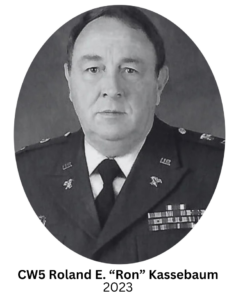 CW5 Roland E. “Ron” Kassebaum was born on February 21, 1946 in Deshler, Nebraska. He graduated from Hebron High School, Hebron, Nebraska in 1964. He attended Fairbury Junior College, Fairbury, Nebraska and the University of Nebraska, Lincoln, Nebraska, and received a Bachelor of Science Degree from the University of the State of New York in 1991. He later attended Liberty University, Lynchberg, Virginia, for courses in accounting and Allen County Community College, Iola, Kansas, for a course in Business Law.
CW5 Roland E. “Ron” Kassebaum was born on February 21, 1946 in Deshler, Nebraska. He graduated from Hebron High School, Hebron, Nebraska in 1964. He attended Fairbury Junior College, Fairbury, Nebraska and the University of Nebraska, Lincoln, Nebraska, and received a Bachelor of Science Degree from the University of the State of New York in 1991. He later attended Liberty University, Lynchberg, Virginia, for courses in accounting and Allen County Community College, Iola, Kansas, for a course in Business Law.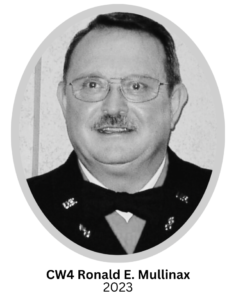 Chief Warrant Officer Four Ronald E. Mullinax was born on August 25, 1946, in Norton, Kansas to Earl and Mary Posson. He was adopted by John and Ada Mullinax. He grew up in Lenora, Kansas, graduating from Lenora Rural High School in 1965. After completing a Denver Automotive Institute training program, Ron worked at Look Body Shop in Norton until 1968.
Chief Warrant Officer Four Ronald E. Mullinax was born on August 25, 1946, in Norton, Kansas to Earl and Mary Posson. He was adopted by John and Ada Mullinax. He grew up in Lenora, Kansas, graduating from Lenora Rural High School in 1965. After completing a Denver Automotive Institute training program, Ron worked at Look Body Shop in Norton until 1968.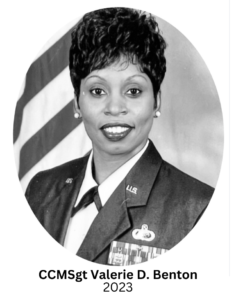 CCMSgt Valerie D. Benton was born on Dec. 10, 1959 in Racine, Wisconsin, where she spent her childhood. She graduated from Washington Park High School in 1978. Soon after graduation she enlisted in the U. S. Air Force and headed to Basic Training at Lackland AFB, Texas in December of 1978. After completion of Basic training, she attended Technical Training at Lowry AFB, Colorado, and graduated as a Food Service Specialist.
CCMSgt Valerie D. Benton was born on Dec. 10, 1959 in Racine, Wisconsin, where she spent her childhood. She graduated from Washington Park High School in 1978. Soon after graduation she enlisted in the U. S. Air Force and headed to Basic Training at Lackland AFB, Texas in December of 1978. After completion of Basic training, she attended Technical Training at Lowry AFB, Colorado, and graduated as a Food Service Specialist.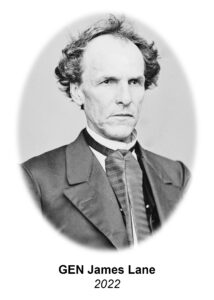 General James H. Lane was a militia leader during the Bleeding Kansas period, the commander of the Kansas “Jayhawker” Brigade during the Civil War, and was one of the first United States Senators from Kansas.
General James H. Lane was a militia leader during the Bleeding Kansas period, the commander of the Kansas “Jayhawker” Brigade during the Civil War, and was one of the first United States Senators from Kansas.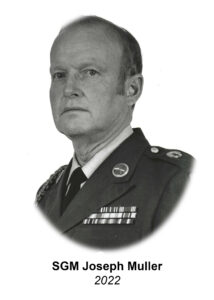 Sergeant Major Joseph T. “Jody” Muller was selected for the Kansas National Guard Hall of Fame for his exceptional service as a citizen soldier in the Kansas National Guard for over 41 years.
Sergeant Major Joseph T. “Jody” Muller was selected for the Kansas National Guard Hall of Fame for his exceptional service as a citizen soldier in the Kansas National Guard for over 41 years.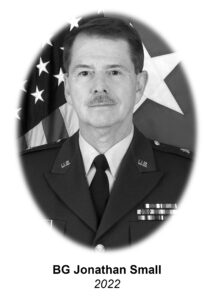 Brigadier General Jonathan P. Small served as The Adjutant General of Kansas from November 1, 2003 to January 4, 2004, culminating a 35-year military career as a distinguished attorney, community leader, citizen-soldier, and military leader. He served as Assistant Adjutant General-Army from 1999 to 2003, and as Commander of the Land Component for the Joint Force Headquarters-Kansas.
Brigadier General Jonathan P. Small served as The Adjutant General of Kansas from November 1, 2003 to January 4, 2004, culminating a 35-year military career as a distinguished attorney, community leader, citizen-soldier, and military leader. He served as Assistant Adjutant General-Army from 1999 to 2003, and as Commander of the Land Component for the Joint Force Headquarters-Kansas.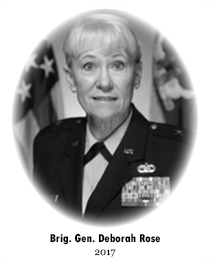 Brigadier General Deborah Rose entered military service with a direct commission into the United States Air Force Nurse Corps in March 1983, assigned to the 184th Tactical Fighter Group. She transferred to the 190th Clinic in December 1985. In October 1990, she deployed to Jeddah, Saudi Arabia, where she served in an Air Transportable Hospital during Desert Shield. In February 1991, she was activated and deployed to Offutt AFB, Nebraska, assigned to the hospital.
Brigadier General Deborah Rose entered military service with a direct commission into the United States Air Force Nurse Corps in March 1983, assigned to the 184th Tactical Fighter Group. She transferred to the 190th Clinic in December 1985. In October 1990, she deployed to Jeddah, Saudi Arabia, where she served in an Air Transportable Hospital during Desert Shield. In February 1991, she was activated and deployed to Offutt AFB, Nebraska, assigned to the hospital.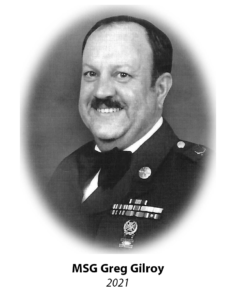 Master Sergeant Greg Gilroy was born on July 25, 1947 at Ottawa, Kansas. He was a lifelong resident of Ottawa, graduating from Ottawa High School in 1965. He then attended Emporia State University during the 1965-66 school year.
Master Sergeant Greg Gilroy was born on July 25, 1947 at Ottawa, Kansas. He was a lifelong resident of Ottawa, graduating from Ottawa High School in 1965. He then attended Emporia State University during the 1965-66 school year.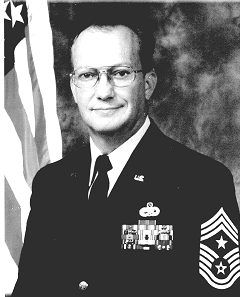
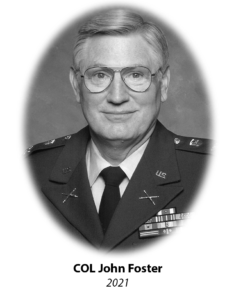
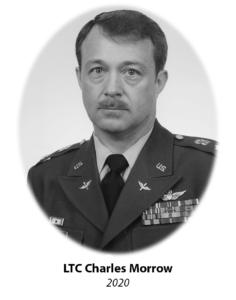
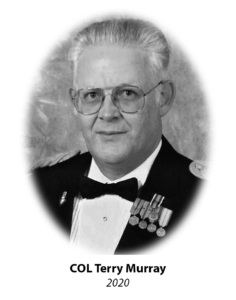

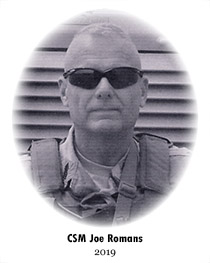
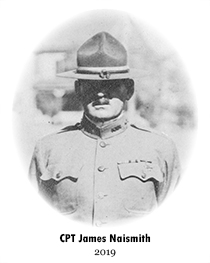

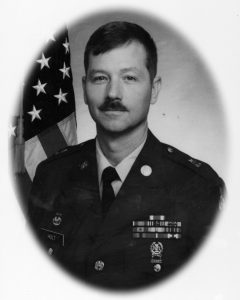 Sergeant Major Lynn E. Holt built his distinguished Kansas Army National Guard career developing strength, retaining Soldiers and insuring Soldiers received proper training. He served from the Detachment through State level. He is known for his ability to recognize Soldier needs at all levels. The same care he felt for Soldiers carried over into his community activities. SGM Holt’s passion for people and their needs exemplifies his true character. He devoted his entire adult life to the betterment of our nation, our state and the Kansas National Guard.
Sergeant Major Lynn E. Holt built his distinguished Kansas Army National Guard career developing strength, retaining Soldiers and insuring Soldiers received proper training. He served from the Detachment through State level. He is known for his ability to recognize Soldier needs at all levels. The same care he felt for Soldiers carried over into his community activities. SGM Holt’s passion for people and their needs exemplifies his true character. He devoted his entire adult life to the betterment of our nation, our state and the Kansas National Guard.